I make art that explores the relationship between people and the natural world.
EVER AFTER
Aurora Loop Gallery in Port Townsend, Washington presents EVER AFTER: an art installation by Karen Lené Rudd. 100 sewn canvas rabbits and an 80 foot miniature skyline made of plastic, cardboard and fabric detritus.
Opening and Artist Reception: March 1, 2025
Show open through the month of March.
You can read more about my process.
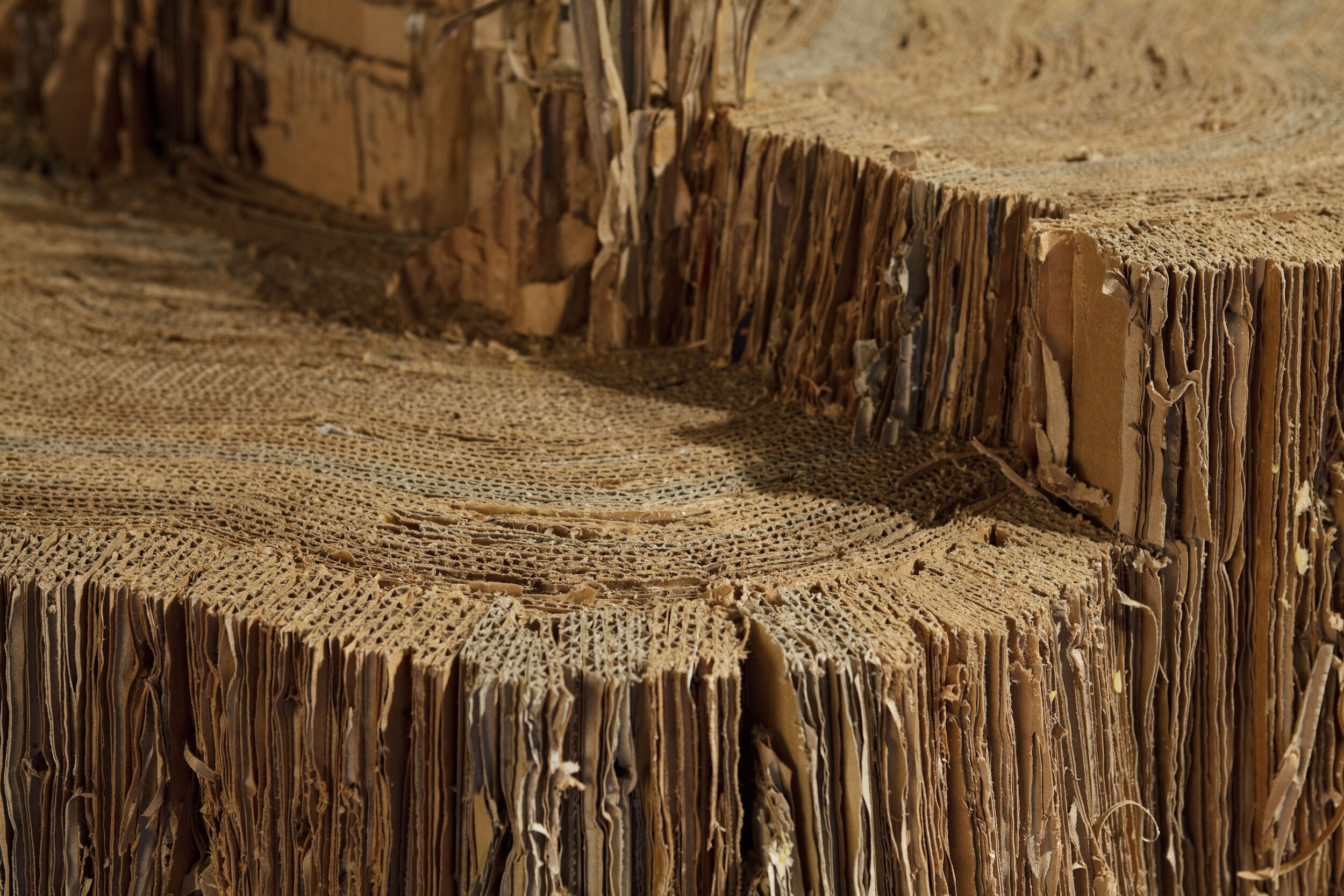
Silva Cascadia
Silva Cascadia: Under the Spell of the Forest features two- and three-dimensional works by Northwest artists inspired by forests and trees. With themes ranging from philosophical contemplation and history to the impacts of climate change and deforestation in our region and beyond, Silva Cascadia aims to provide contemplation, promote awareness, and inspire conversations.
Featured artists: Maria Cristalli, Linda Davidson, Kathleen Faulkner, Patty Haller, Laura Hamje, Hart James, Claire Johnson, Donna Leavitt, Karen Lené Rudd, Juliet Shen, Kimberly Trowbridge, and Suze Woolf.
Guest Curator: Kathleen Garrett
Anthropocene
“Through three distinct bodies of work in this exhibition, Karen Lené Rudd ties together her uncanny vision of the ruptures humans have made in the vast terrestrial span upon which we have only very recently appeared. Tree stumps, Industrial Age clothes, and miniature tableaus trace the existence of unpremeditated participants in what would become generations of land and resource exploitation.”
– Kathleen Garrett
Purchase the show catalog. All proceeds benefit the Jefferson Museum of Art & History. You can also watch this artist talk. Images below: Ann Welch.
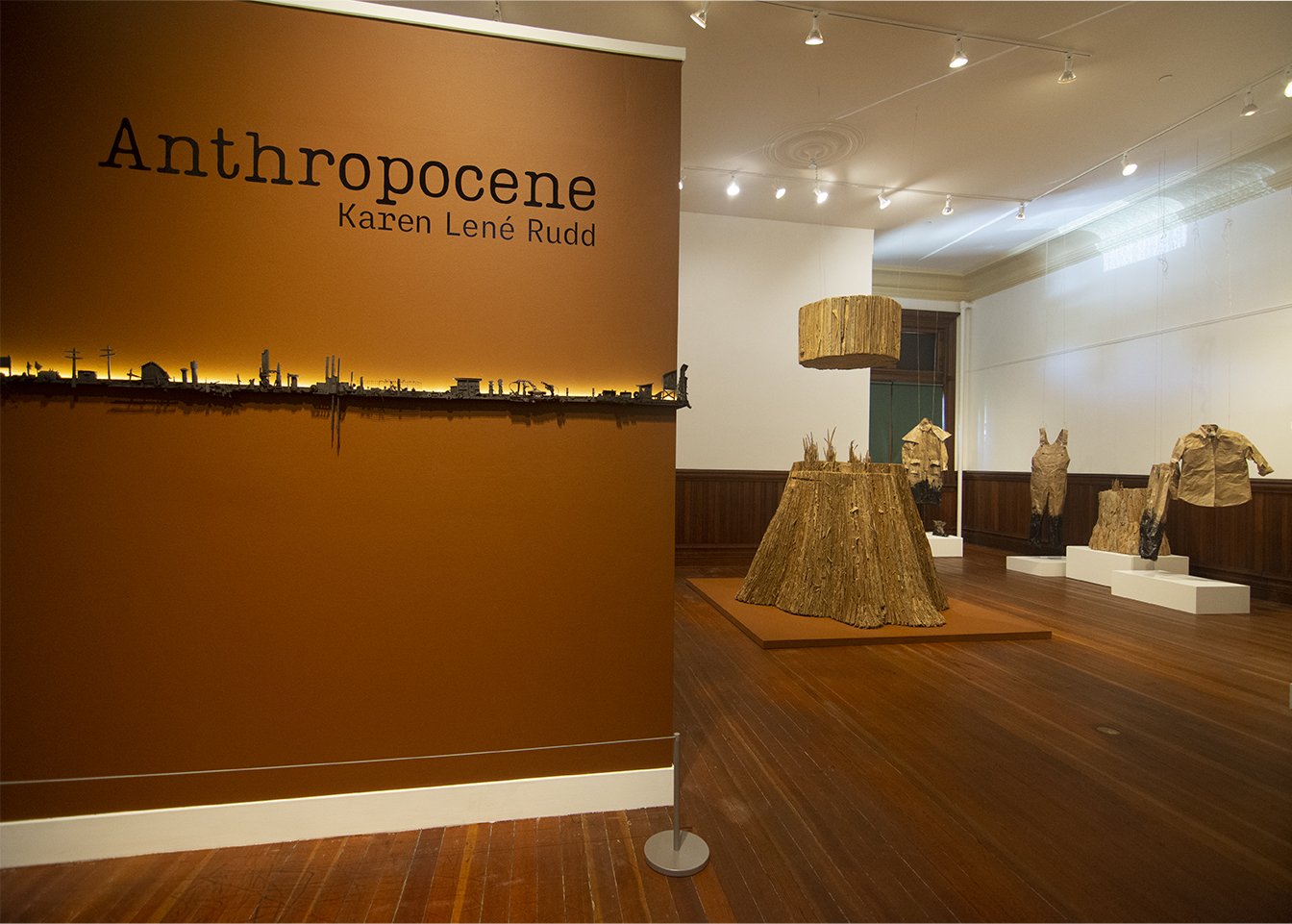
"Anthropocene" at the Jefferson Museum of Art & History, Port Townsend, Washington.
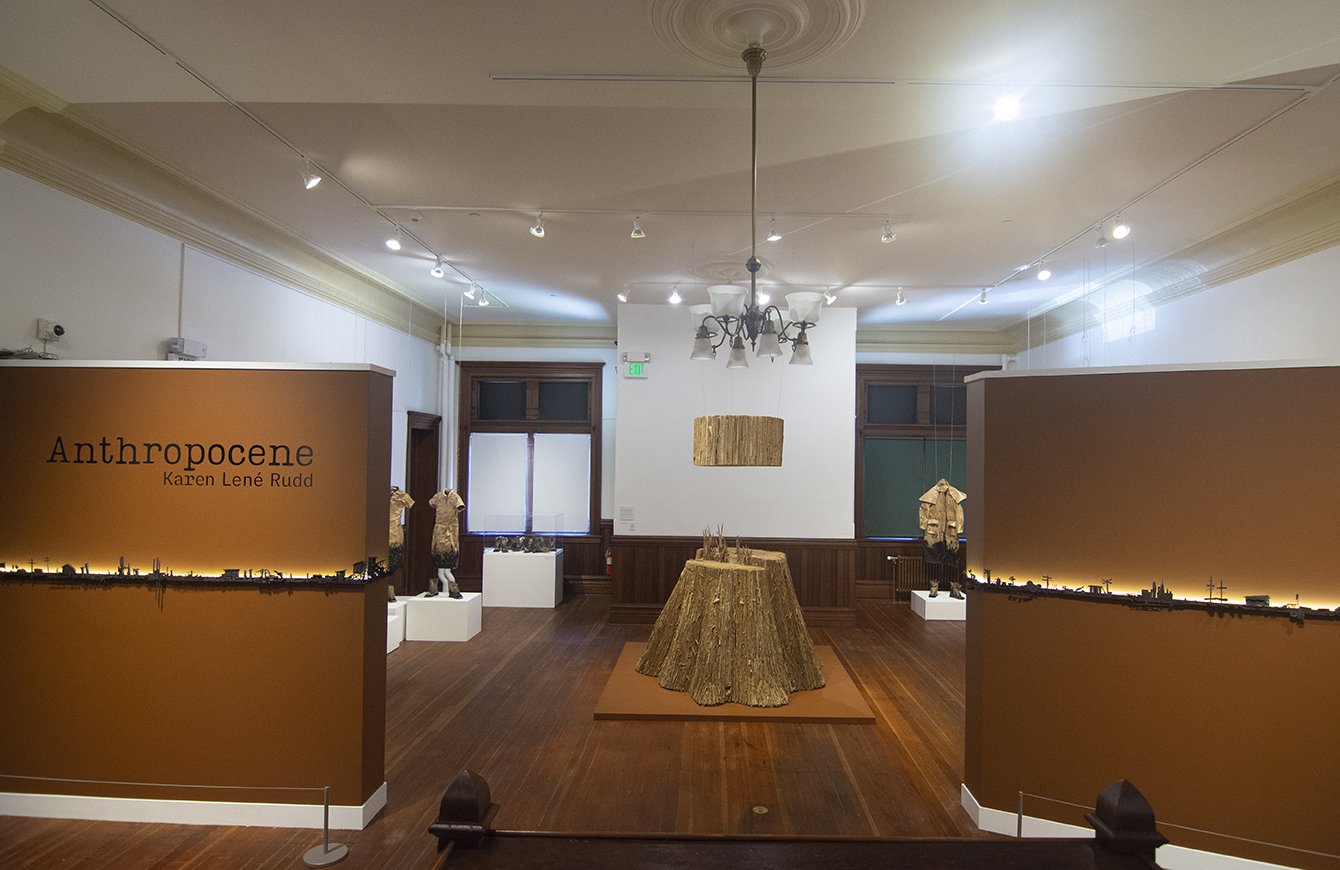
The miniature tableaus span two walls.
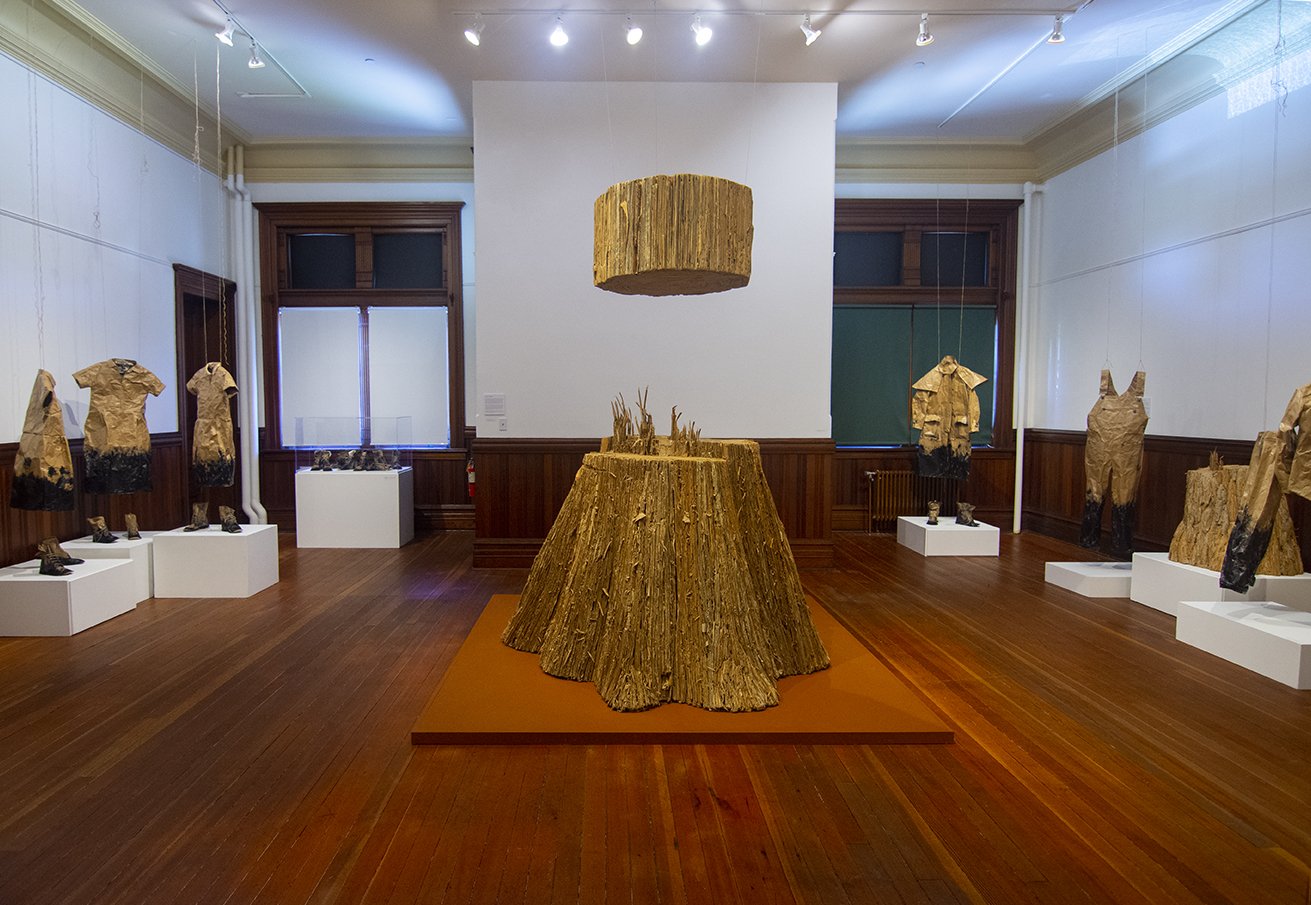
"Last Stand: Cedar", reclaimed corrugated cardboard. 8 miles of cardboard cut to make this piece.
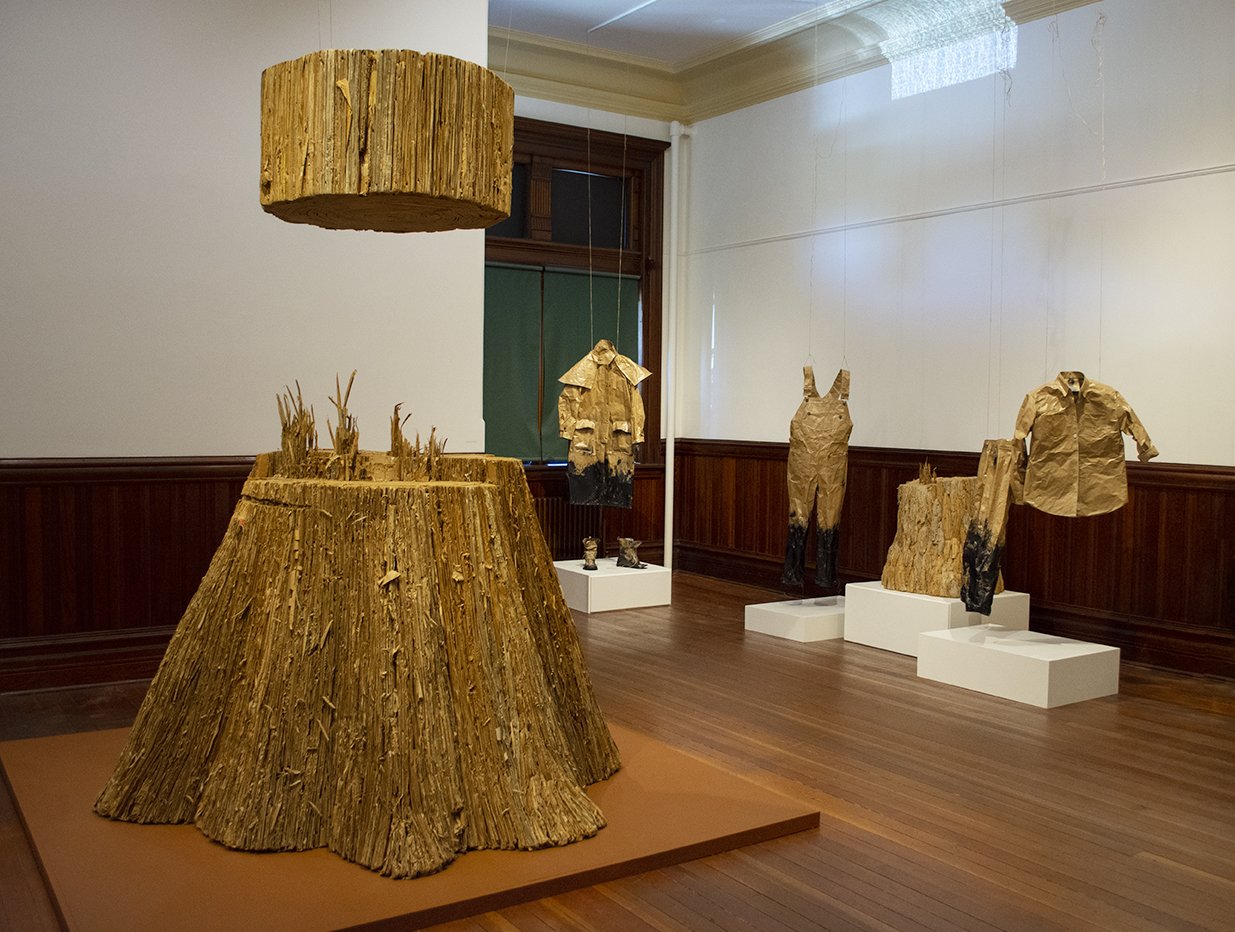
In the background, is part of the "Common Thread" series, a commentary of human and natural resource exploitation.

"Common Thread" series, kraft paper, ink, thread, sewing notions.

"Common Thread" series detail of overalls. Typewritten quotes are from 1960s and 1970s conservation texts.
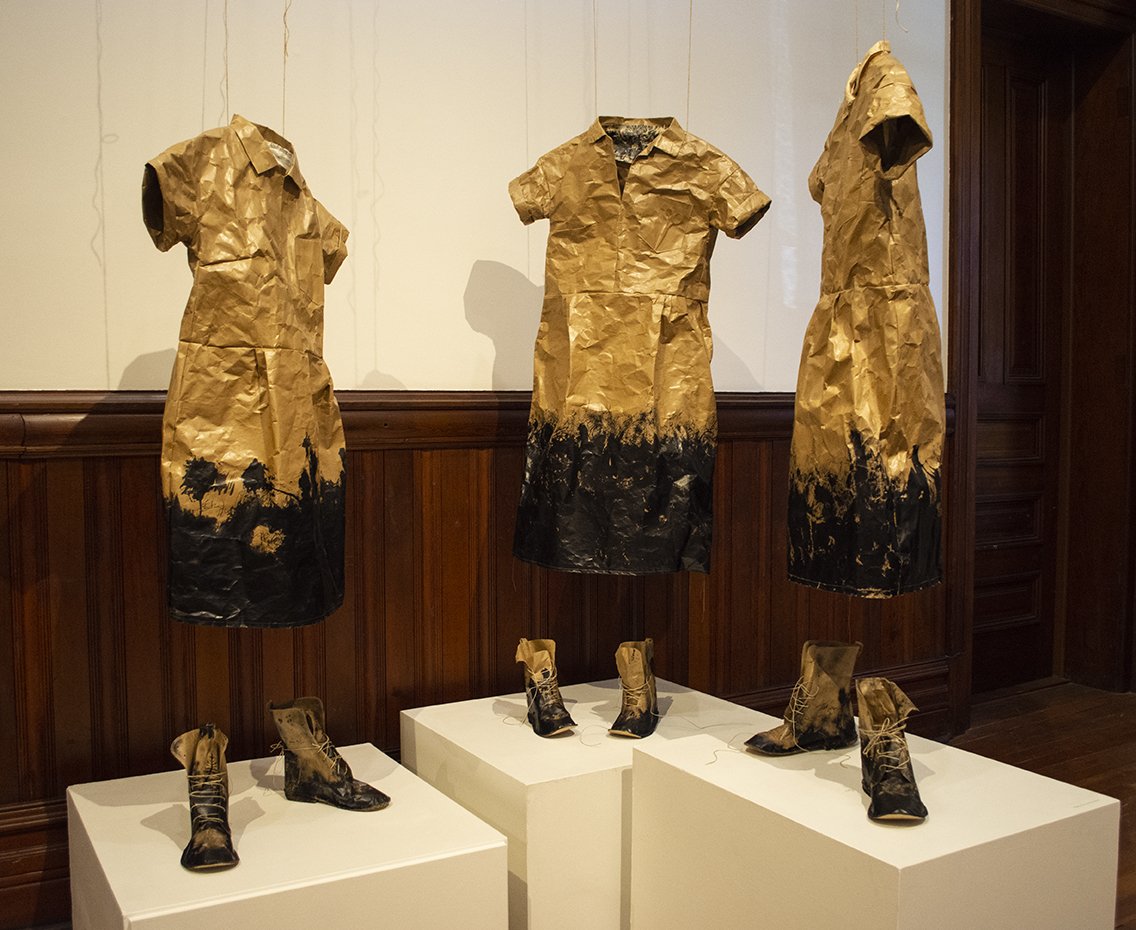
"Common Thread" series. Imagery on these factory dresses pertain to the Triangle Shirtwaist Fire.
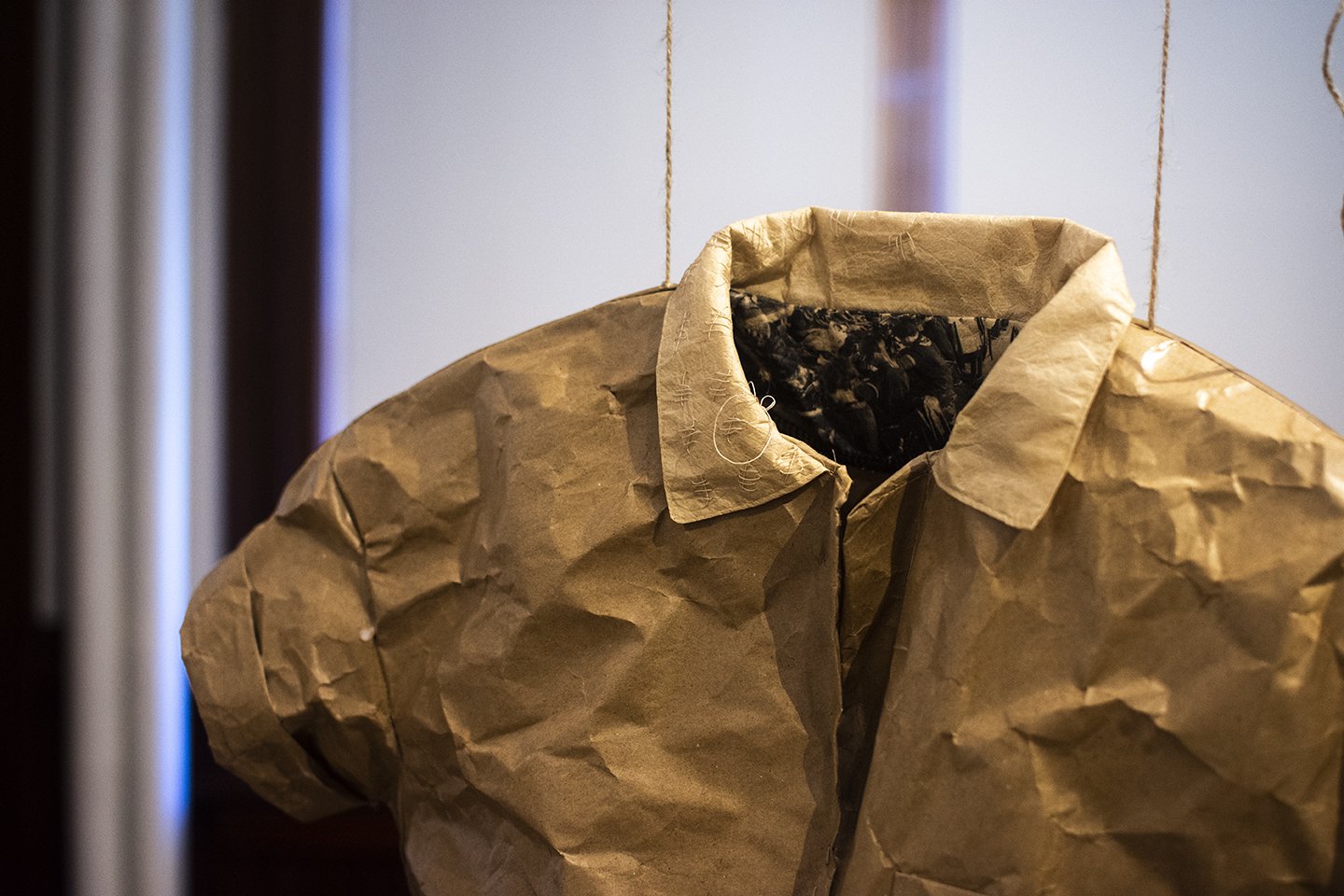
"Common Thread" series detail.
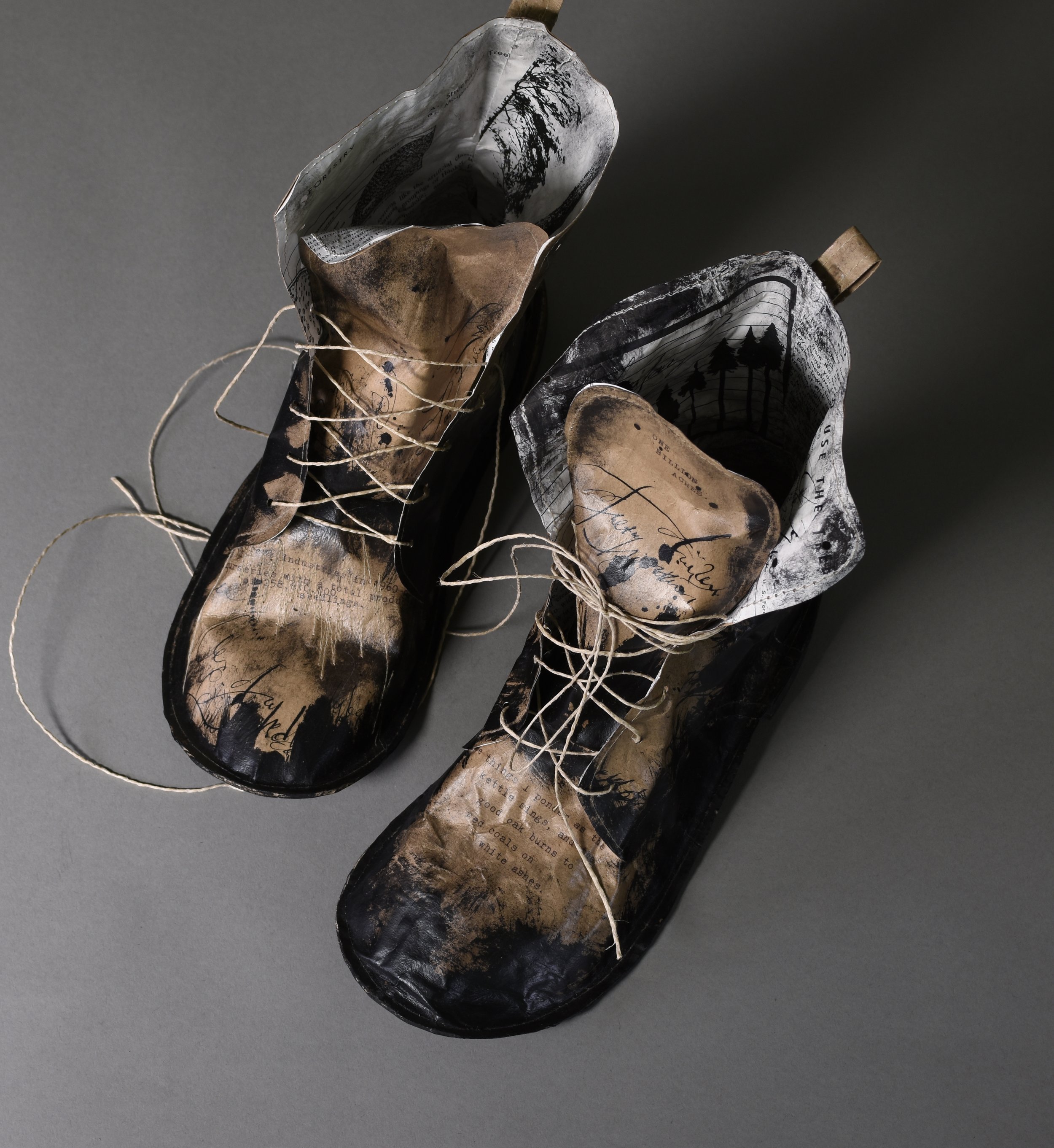
This pair of kraft paper boots is embellished with a quote from Aldo Leopold's book "A Sand County Almanac." The boot liners are made with pages from a conservation textbook.

"Last Stand", corrugated cardboard. Measures about 4 feet in diameter.
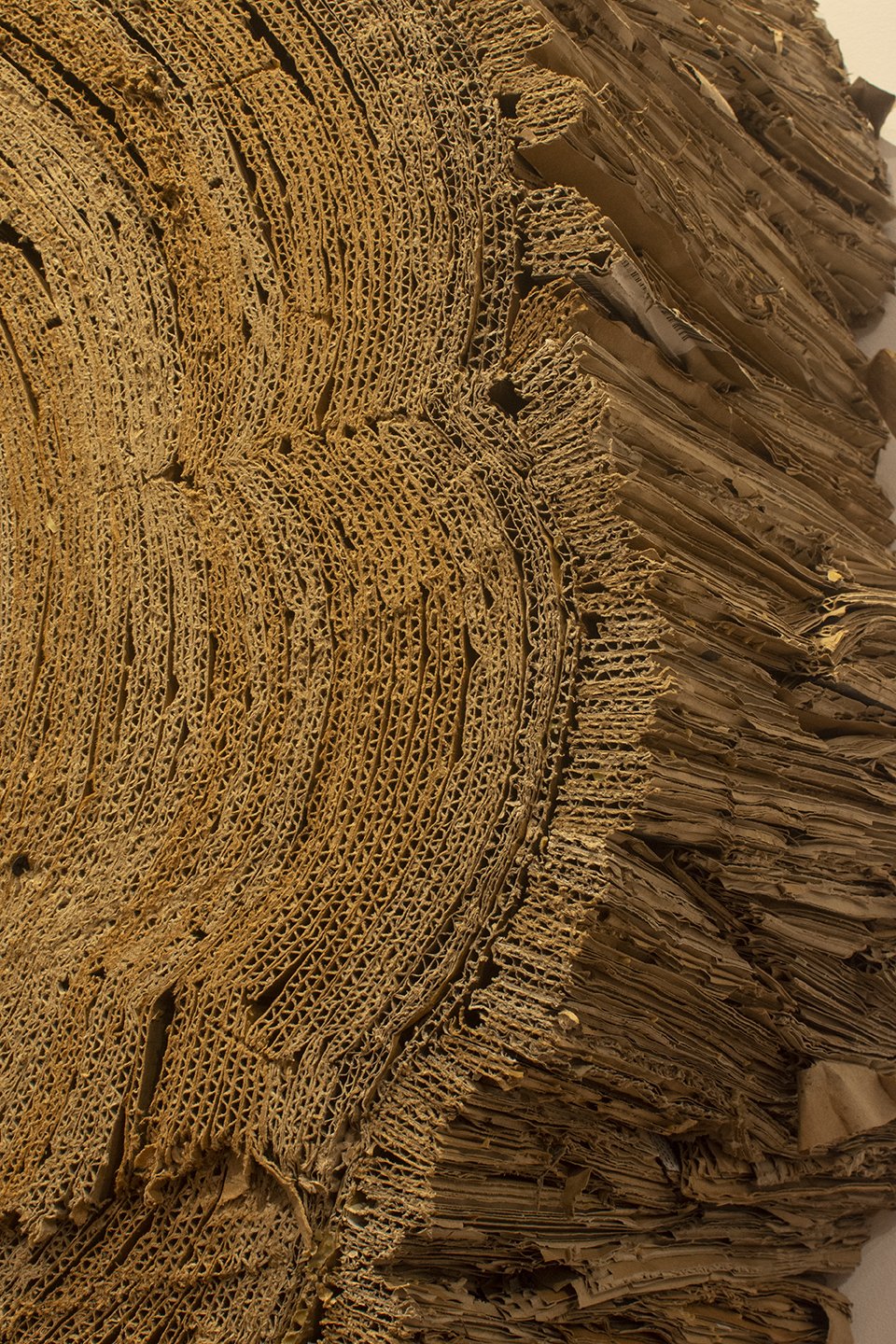
"Last Stand", corrugated cardboard detail.
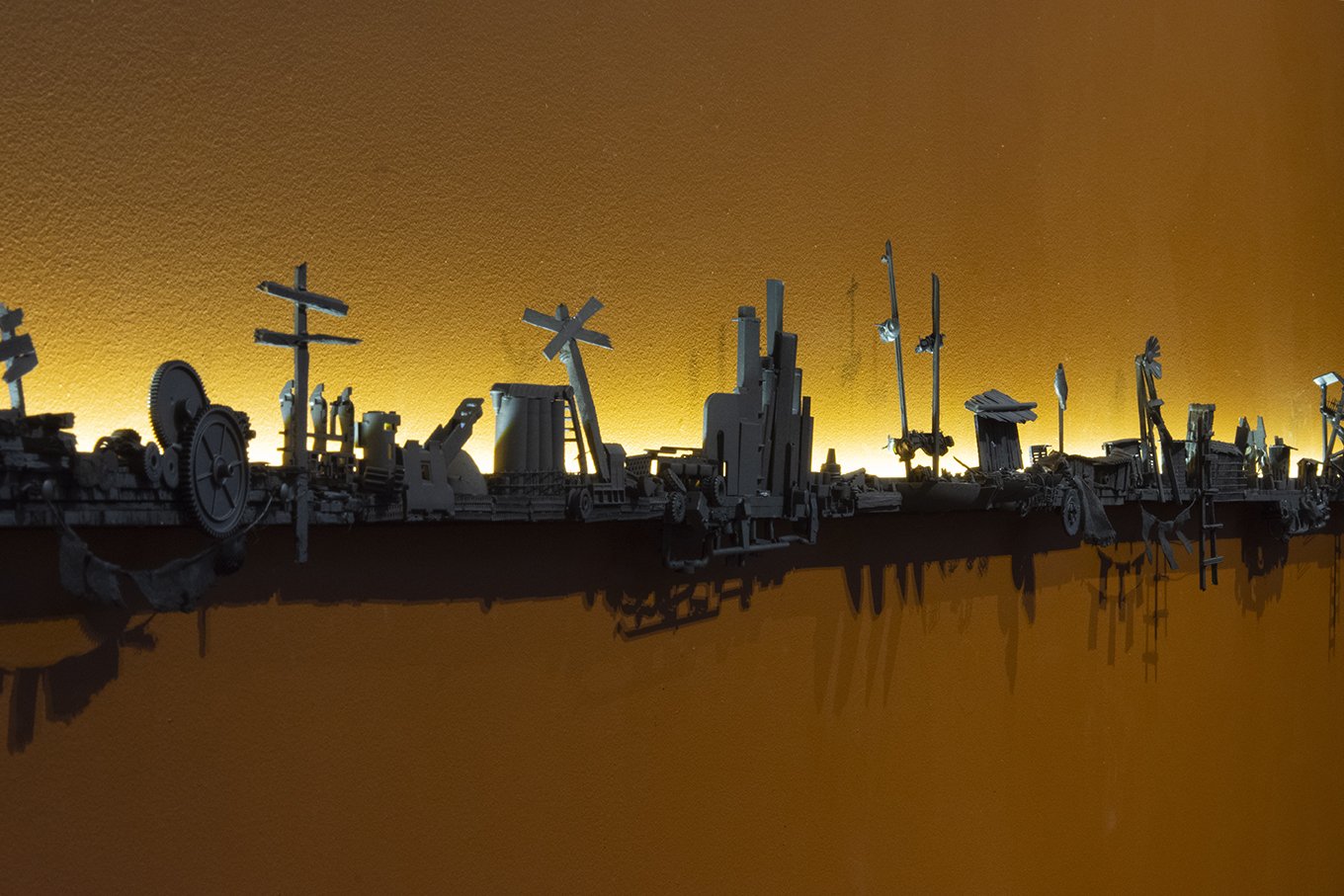
"Anthropocene", castoffs from consumer culture: laser printers, packaging and graphite finish.
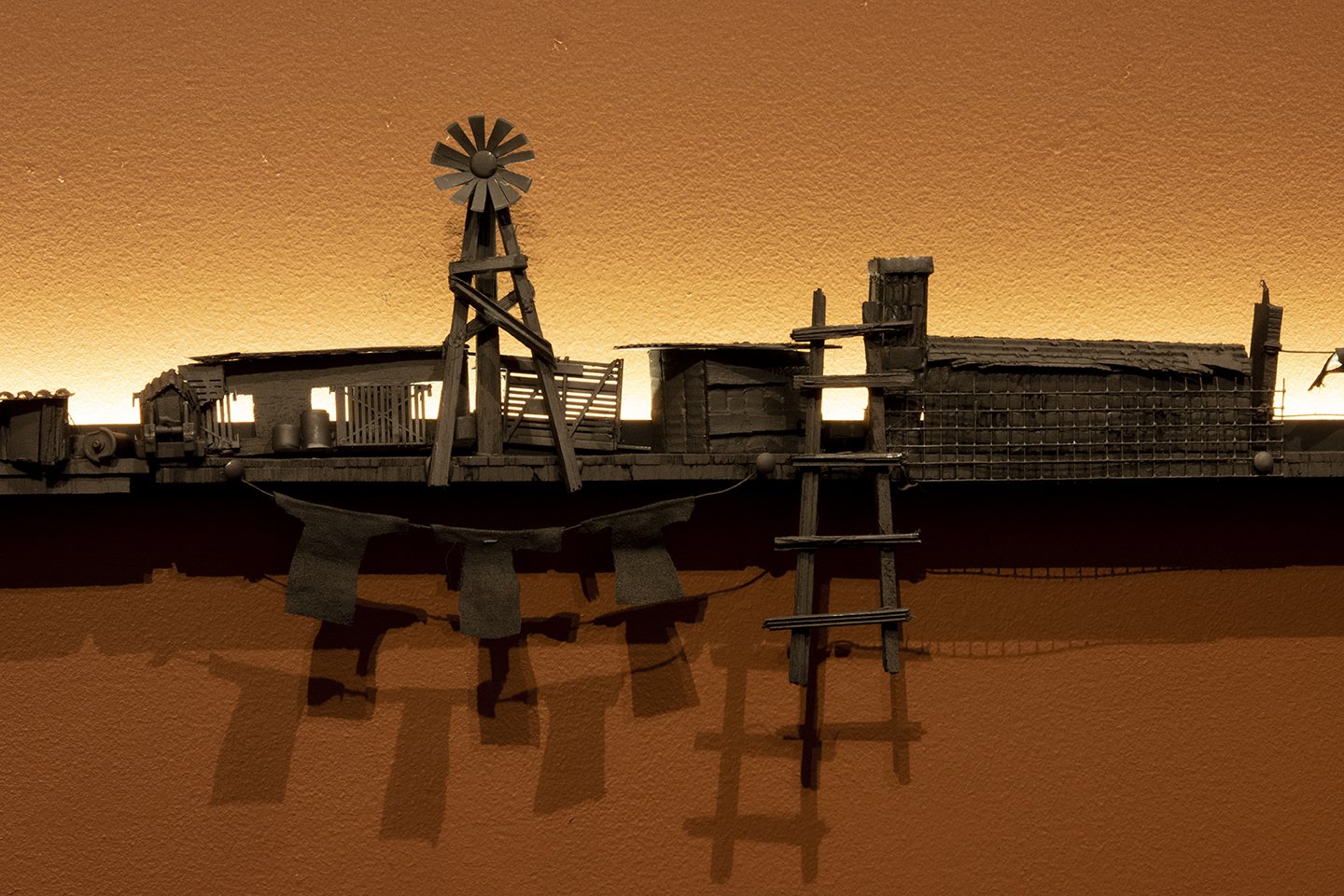
"Anthropocene", castoffs from consumer culture: laser printers, packaging and graphite finish. Inspiration for these tableaus often came from historic black and white photos.
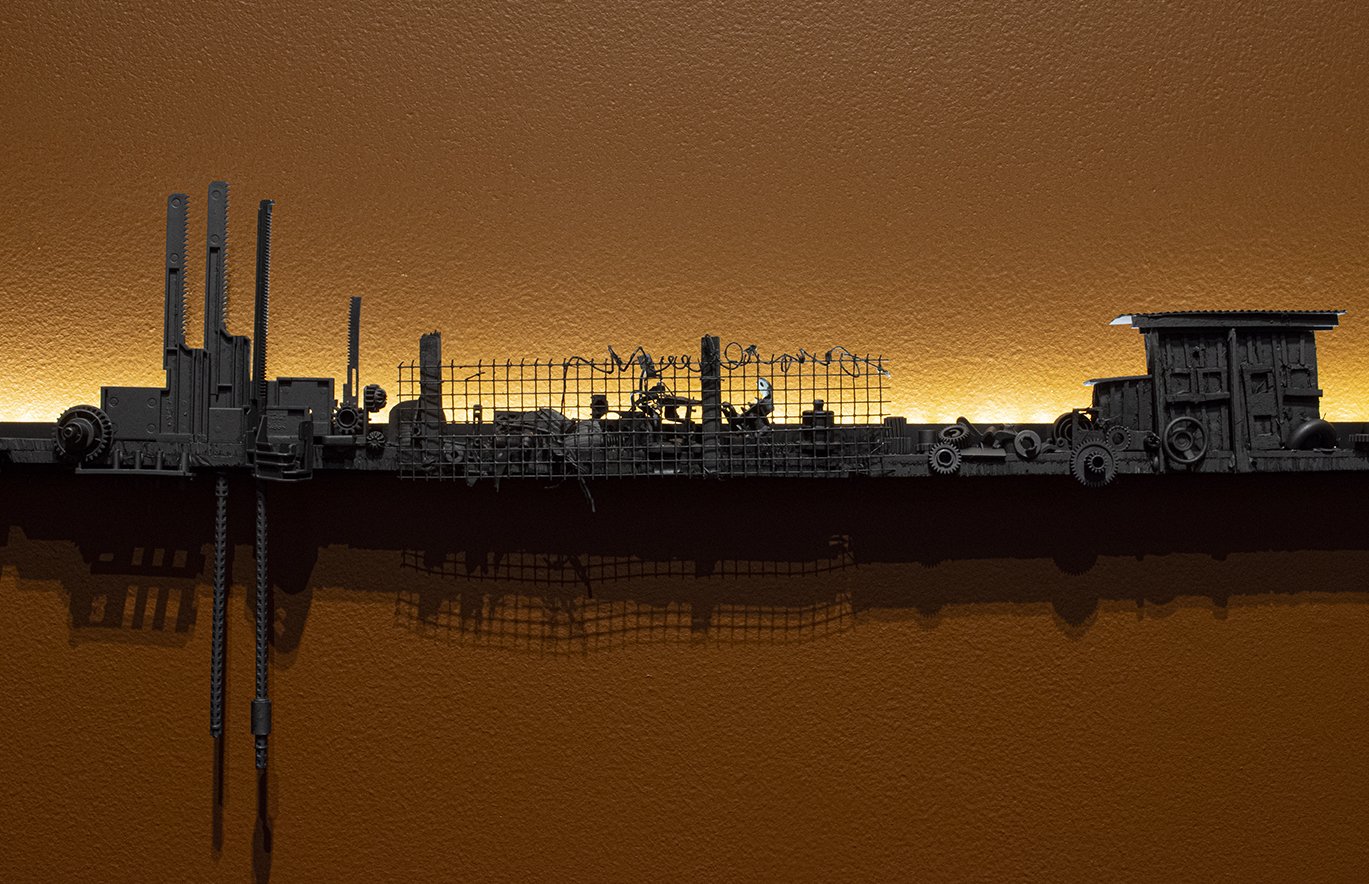
"Anthropocene", castoffs from consumer culture: laser printers, packaging and graphite finish. The graphite finish is an agricultural lubricant for farm machinery. It creates a charcoal-colored sheen.
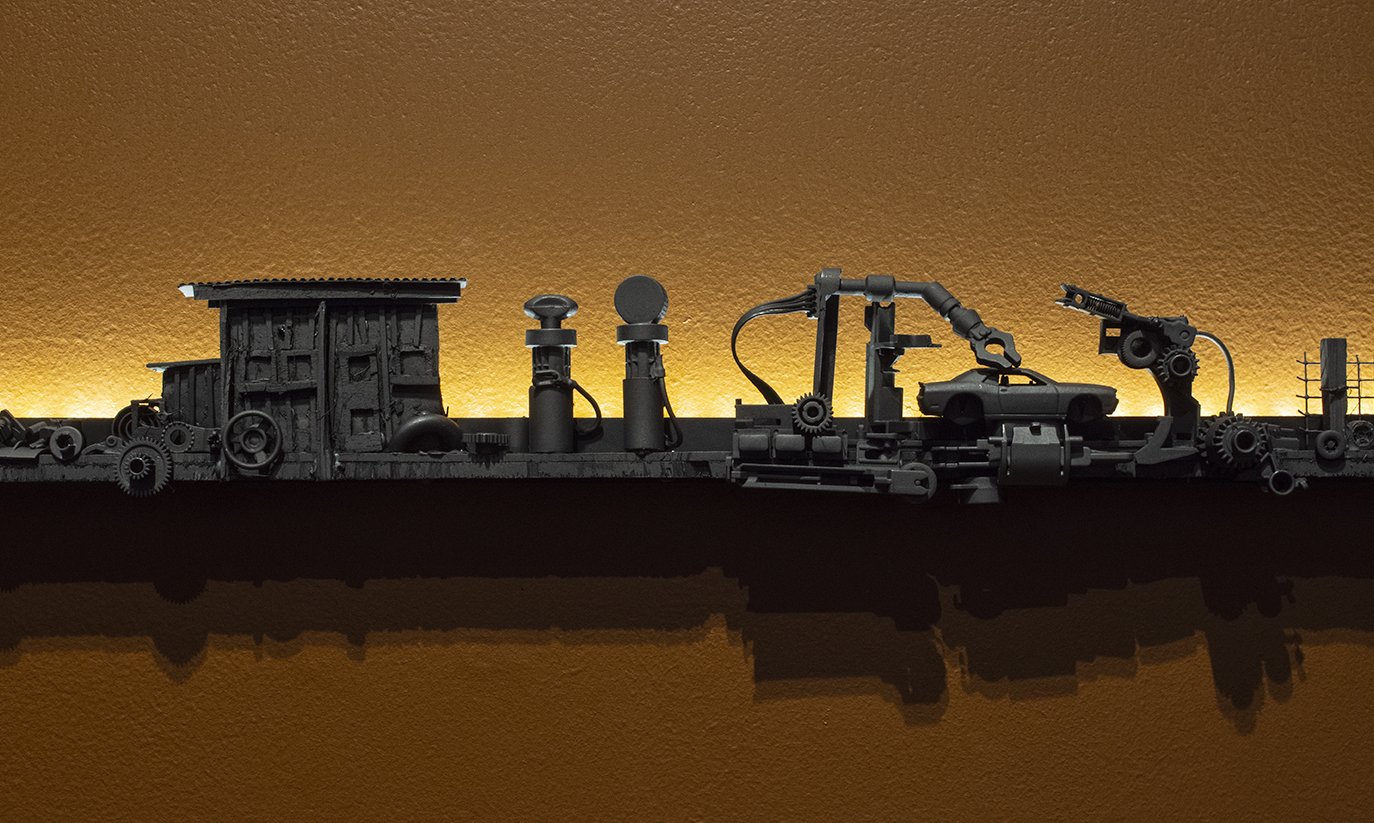
"Anthropocene", castoffs from consumer culture: laser printers, packaging and graphite finish. Plastic thread spools, gears from electronics and corrugated cardboard from shoeboxes were used here.
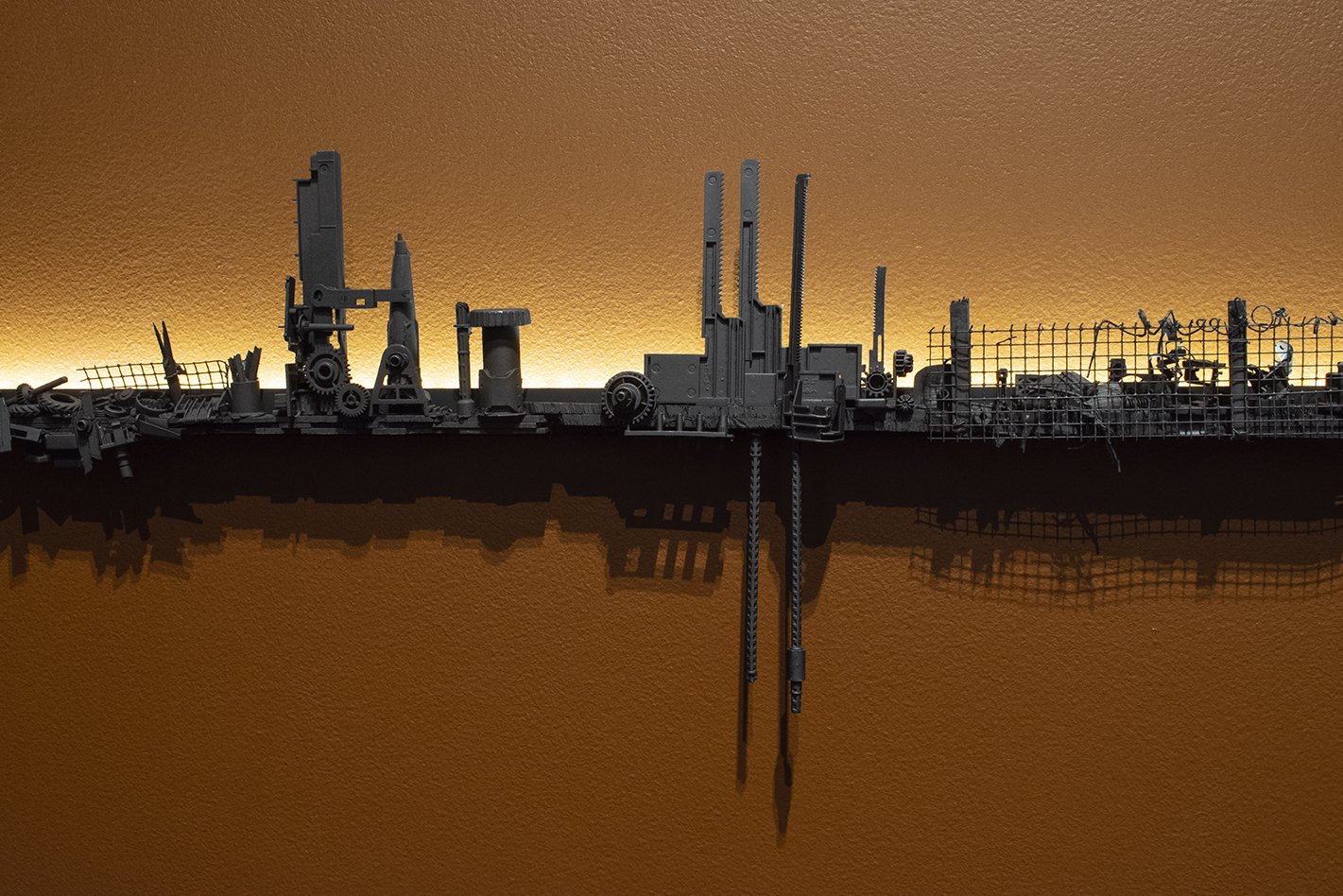
Levers from inside obsolete laser printers were used to fashion the smokestacks and skyscrapers.
The current geological age, viewed as the period during which human activity has been the dominant influence on climate and the environment.
My Process
This mixed-media installation is created with discarded items, such as cardboard, electronics and packaging. The 1-minute time-lapse video shows me making a small section of the final piece. The dark finish is graphite.
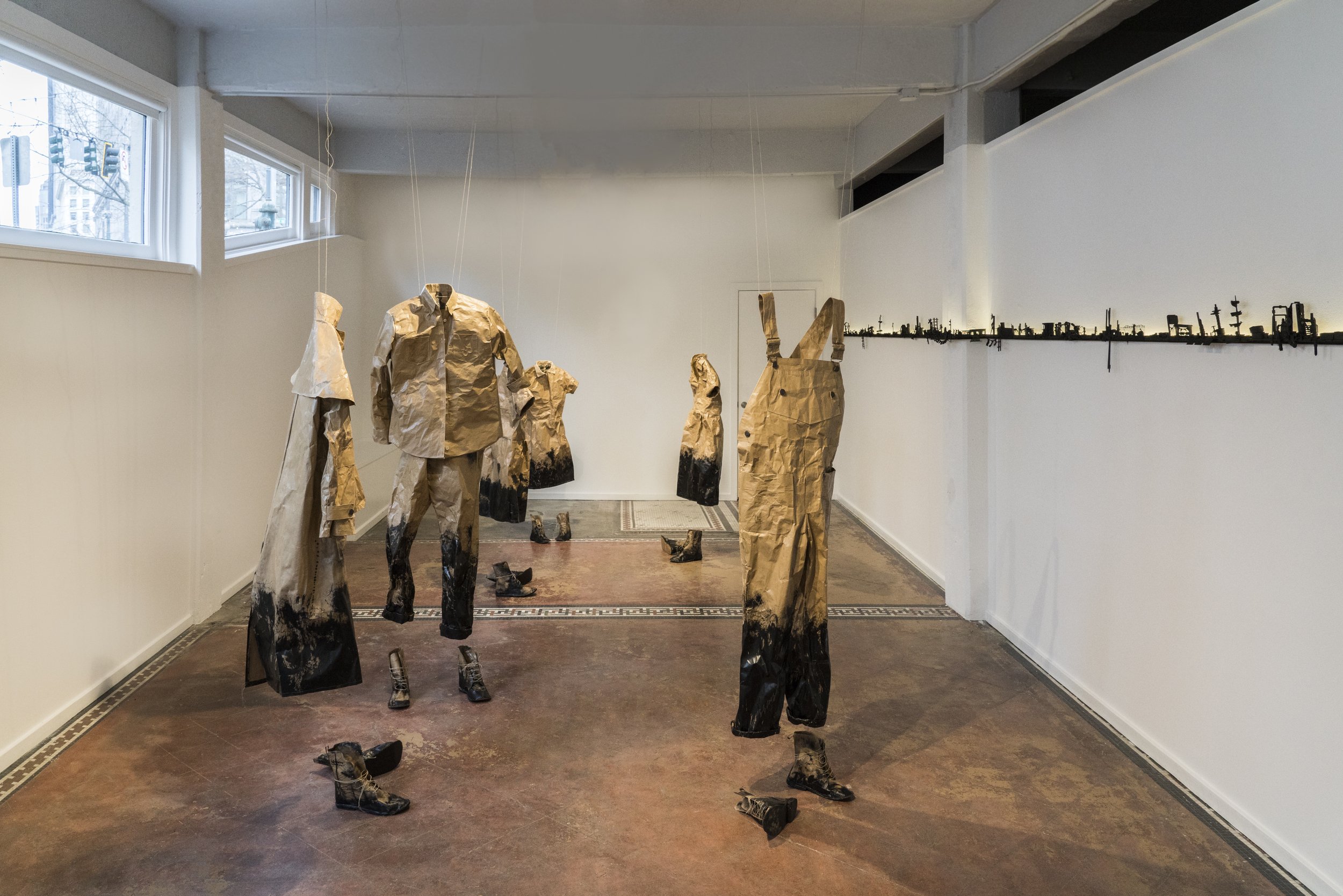
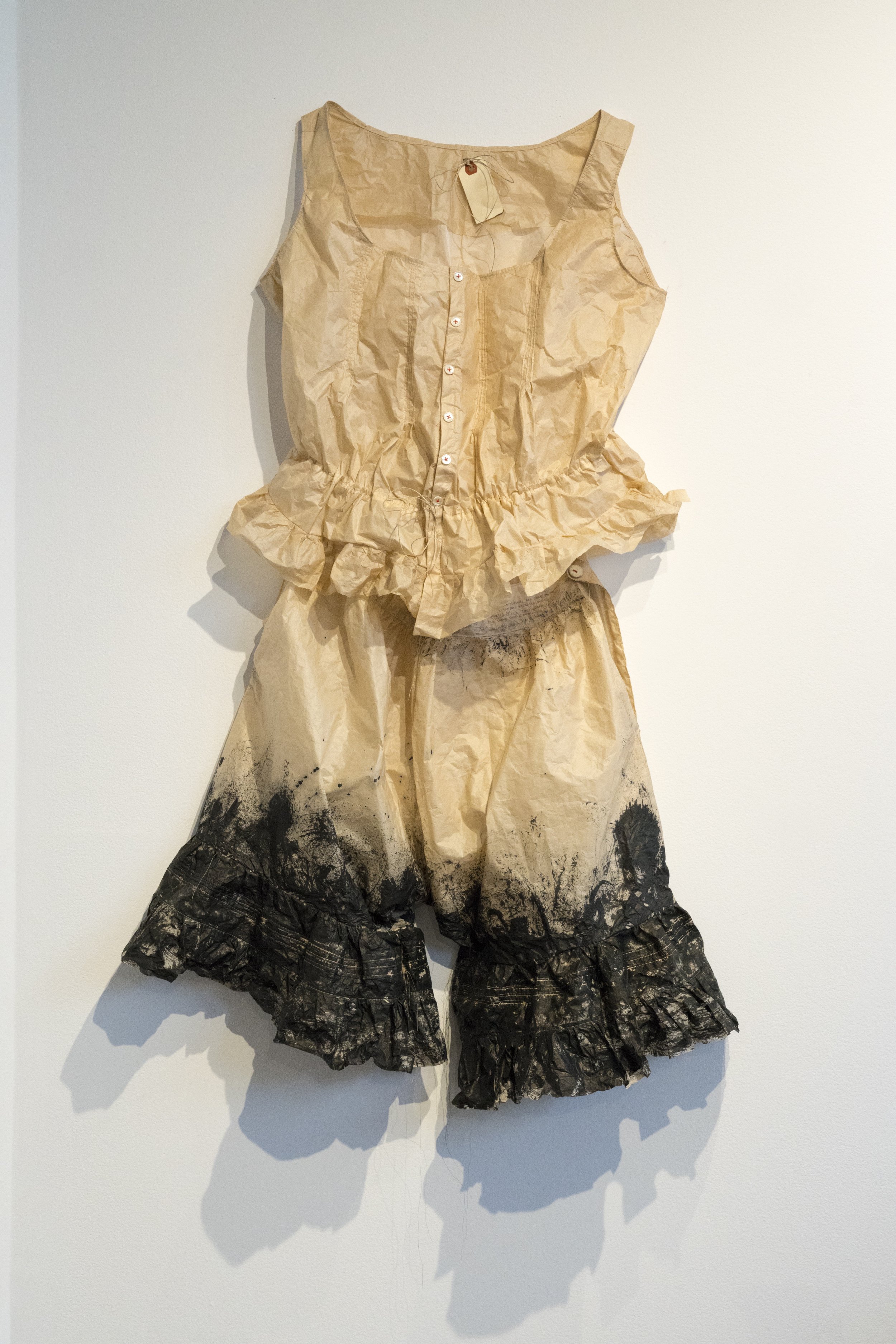
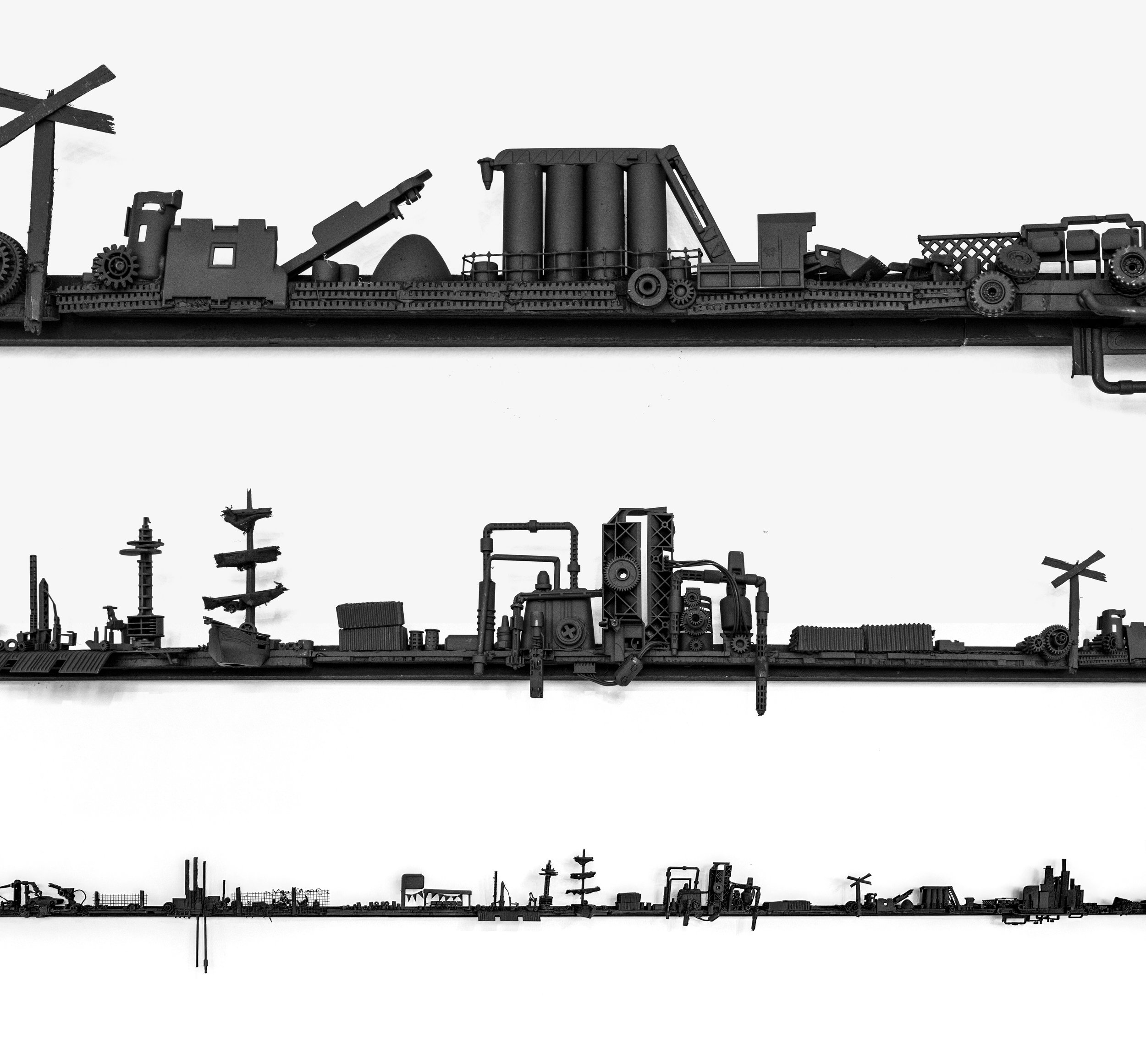
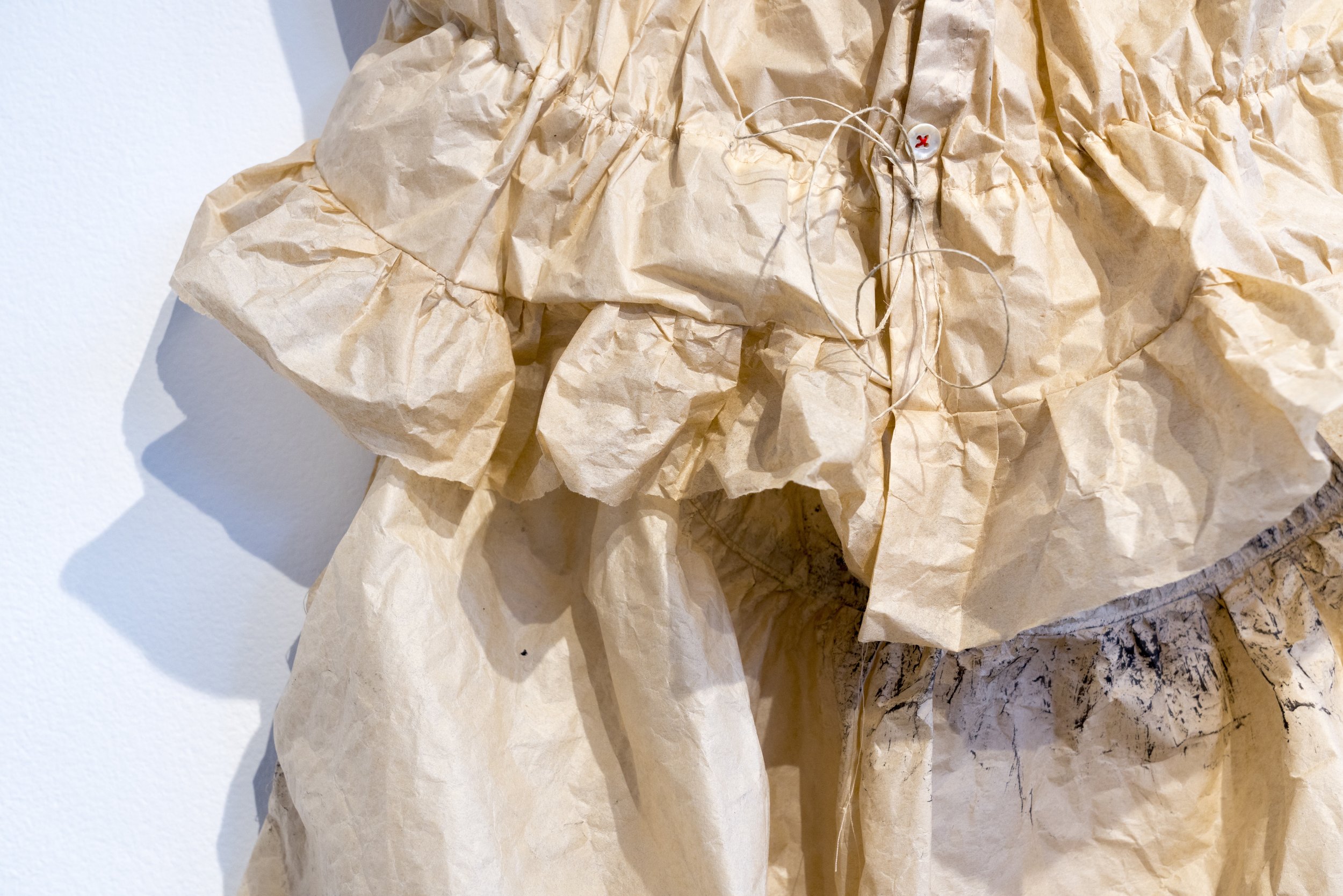

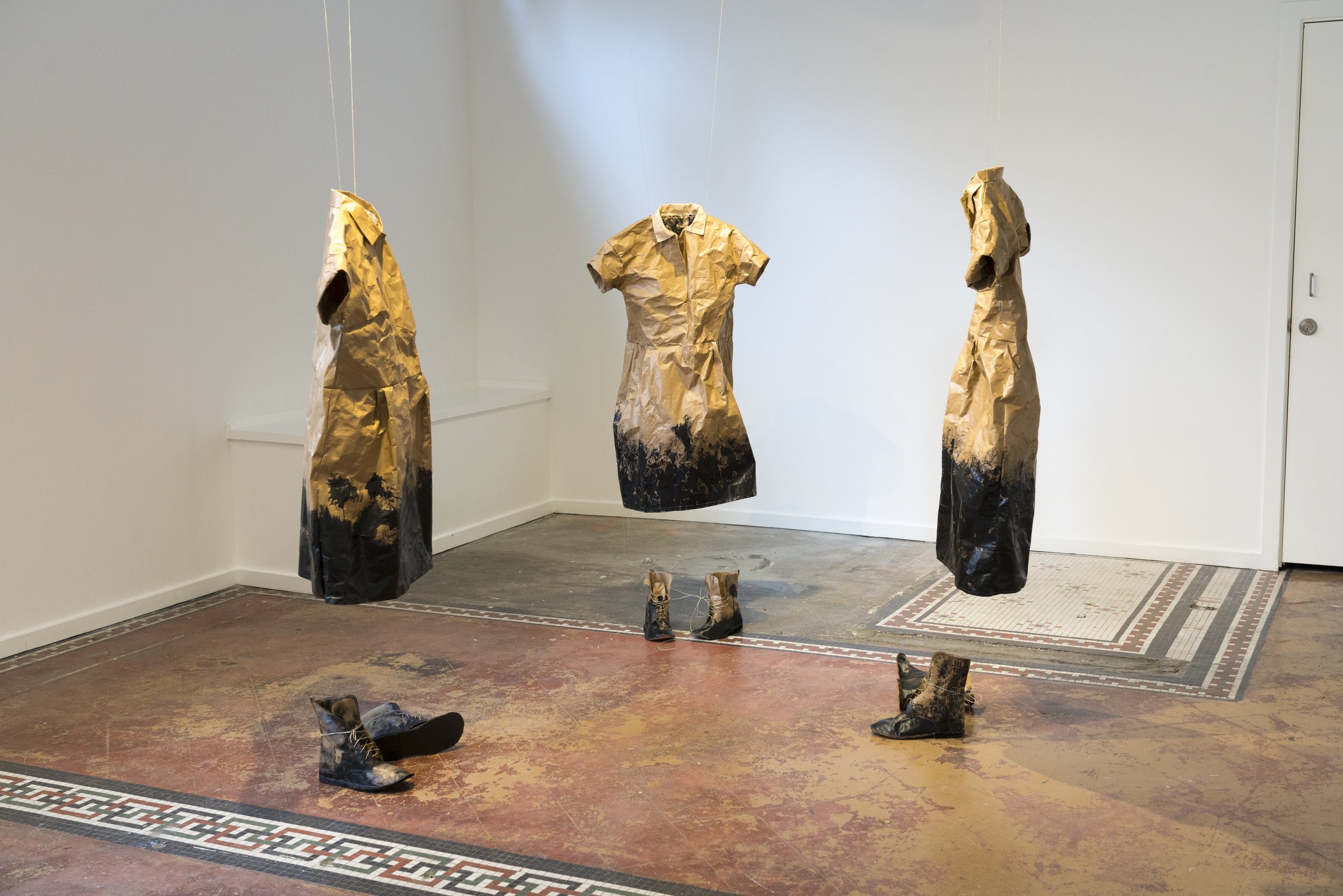
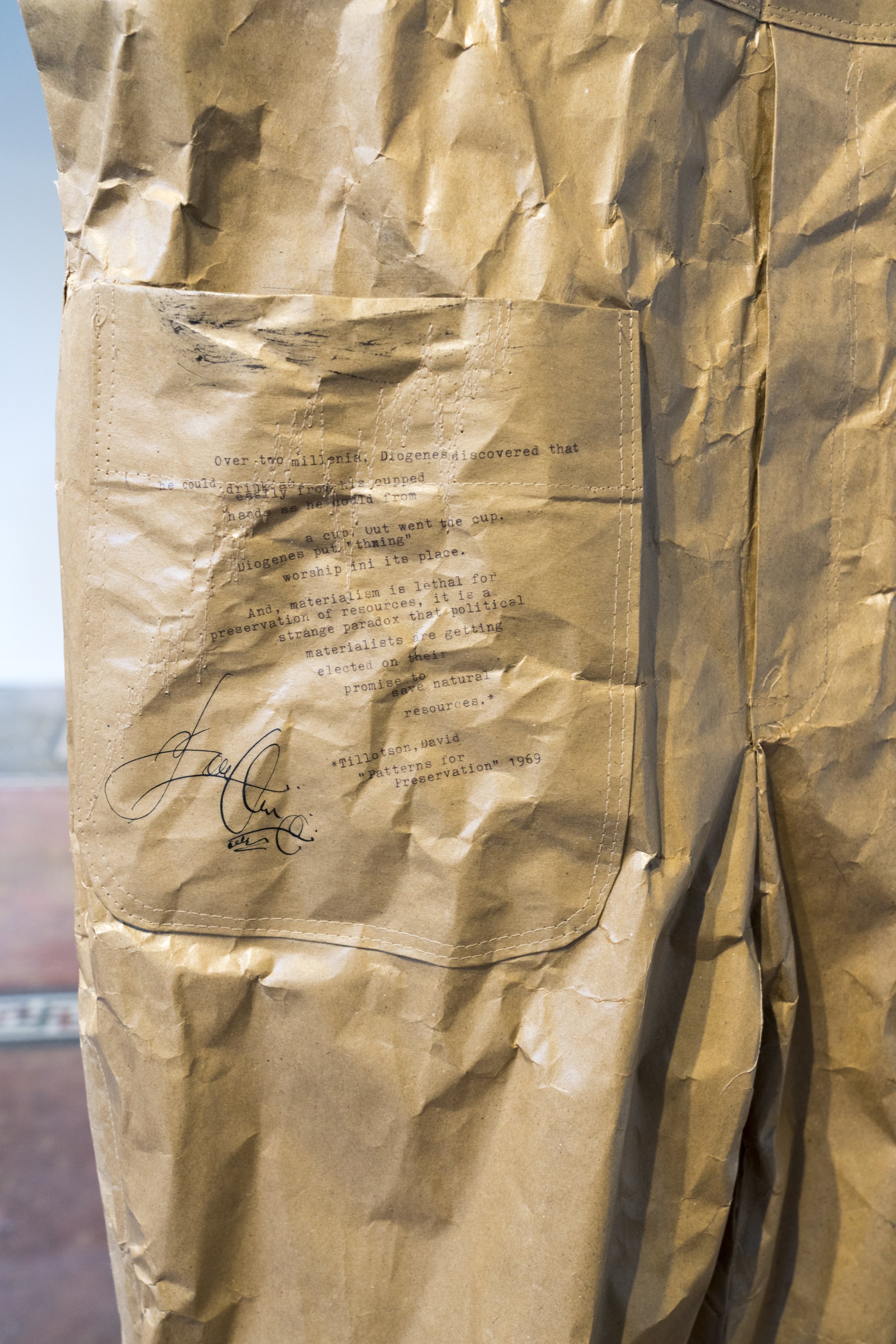
New Growth
Webster’s Woods at the Port Angeles Fine Arts Center

Ferns in orange duct tape.




“A Rabbit Named ________.”
an art installation at the Centrum Foundation
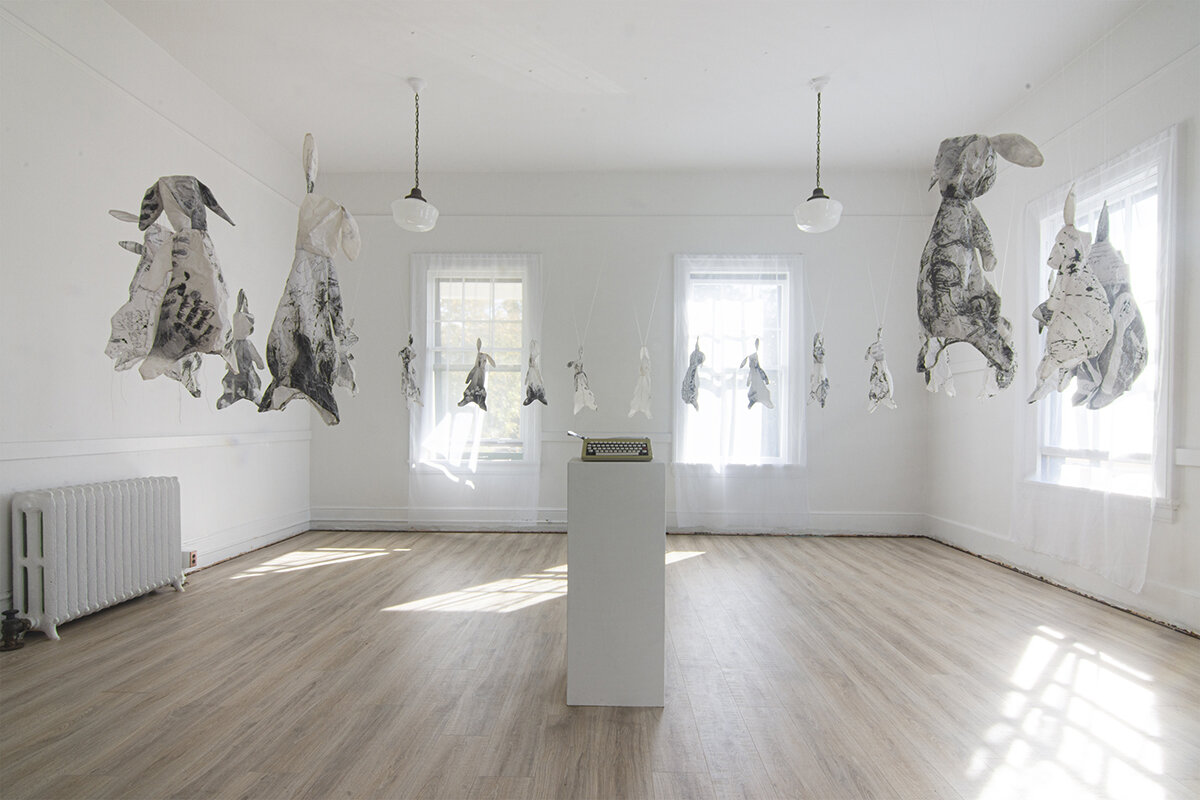
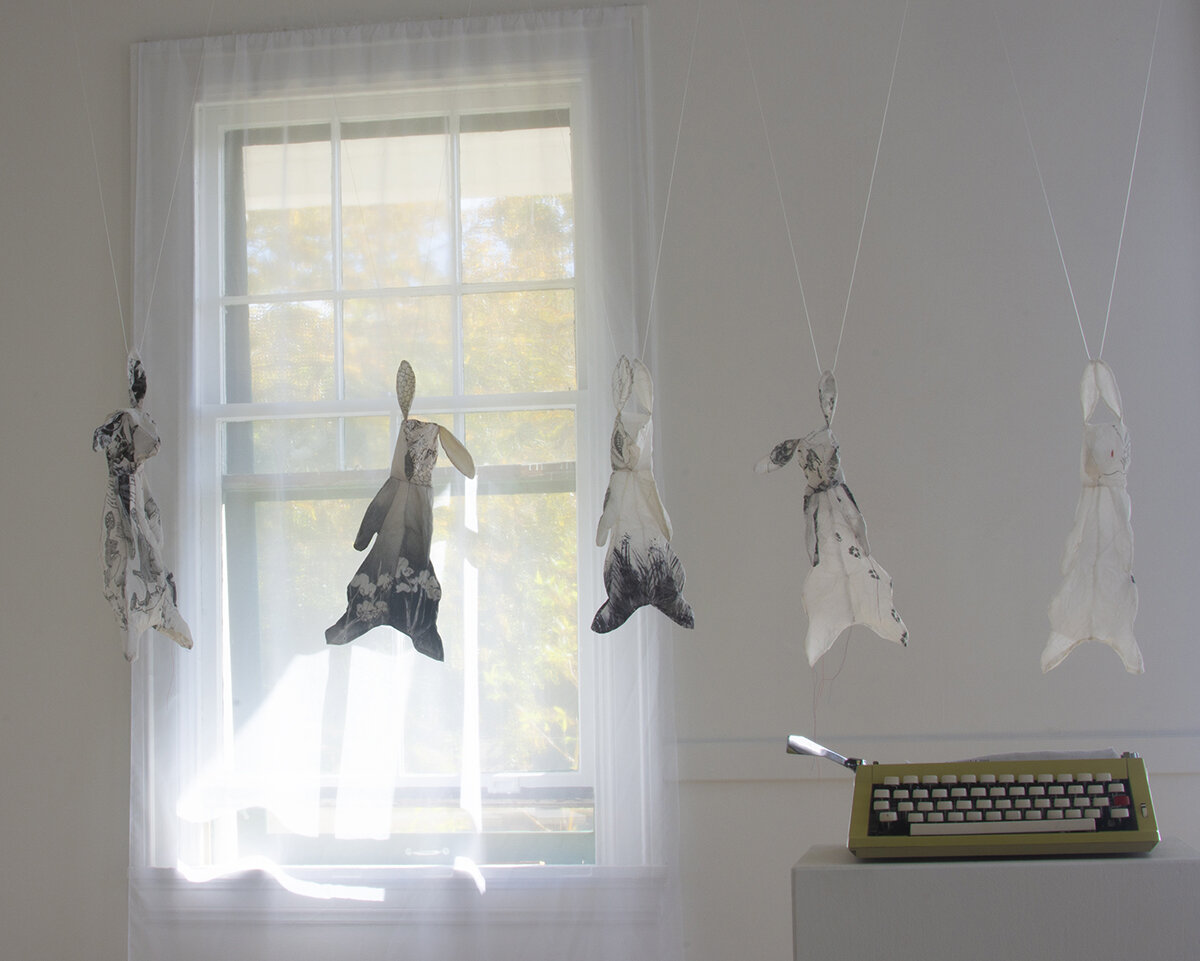
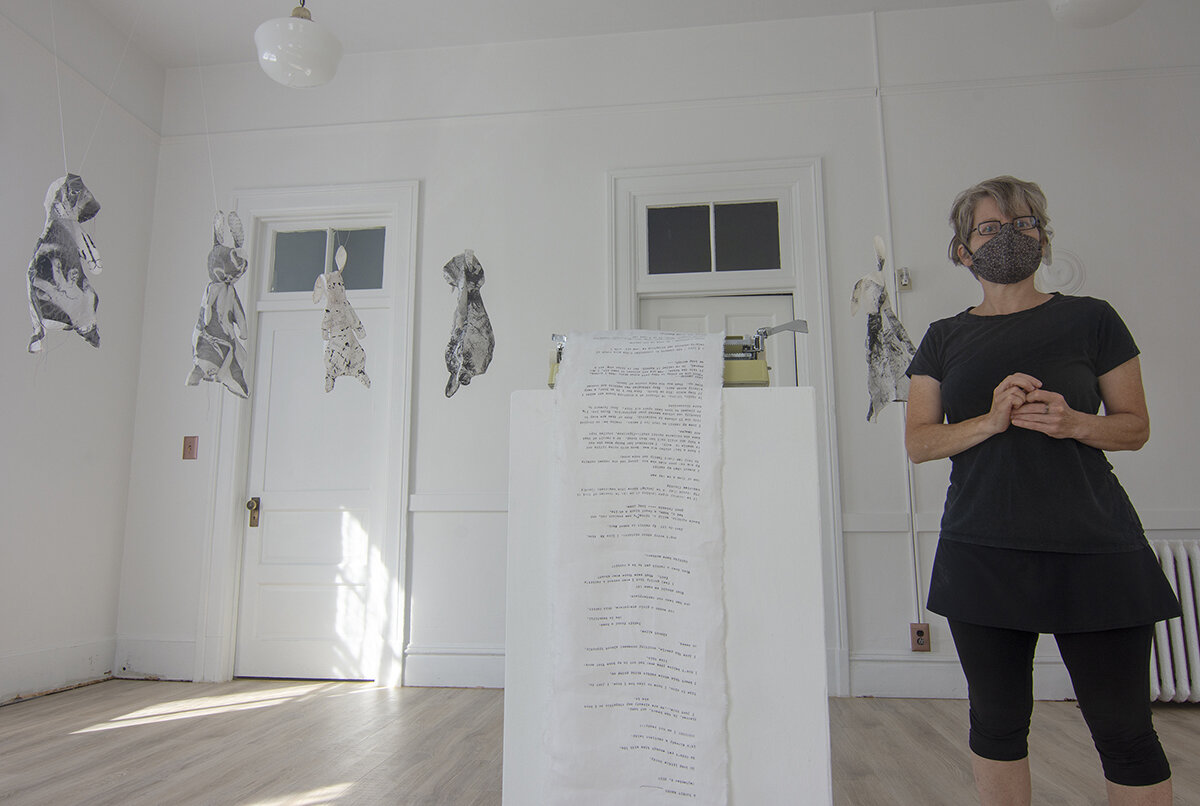
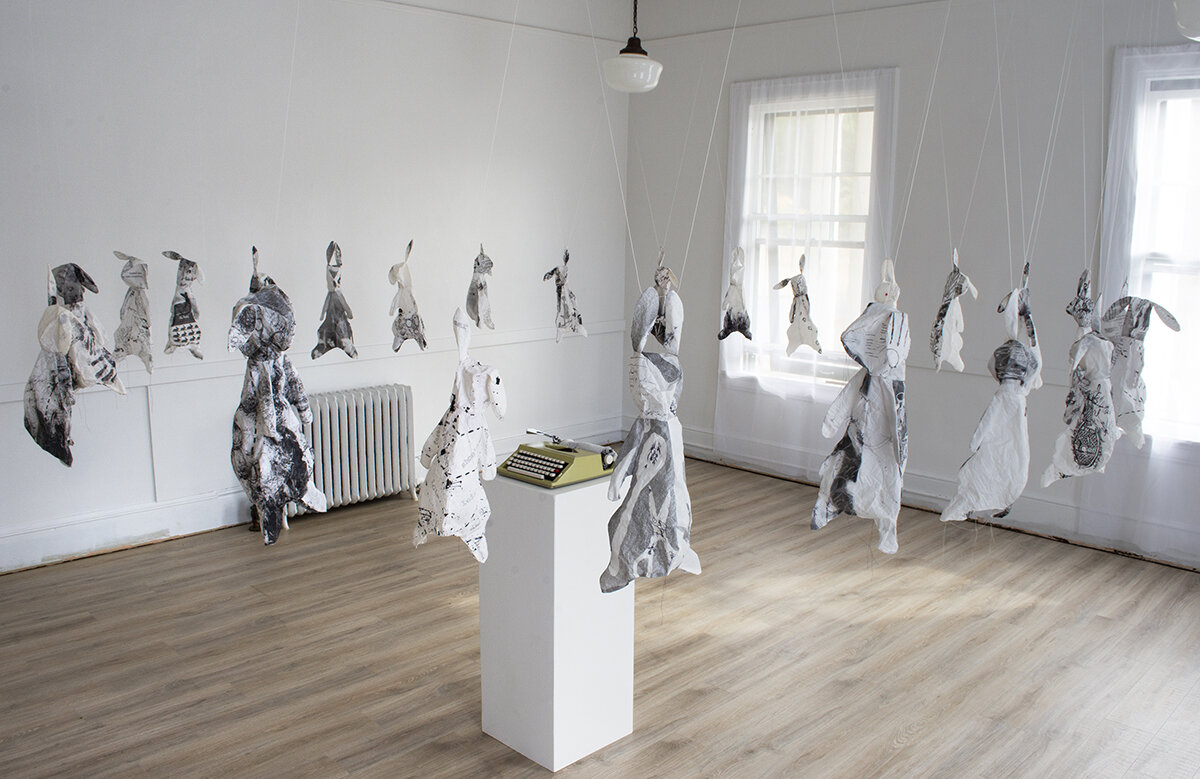
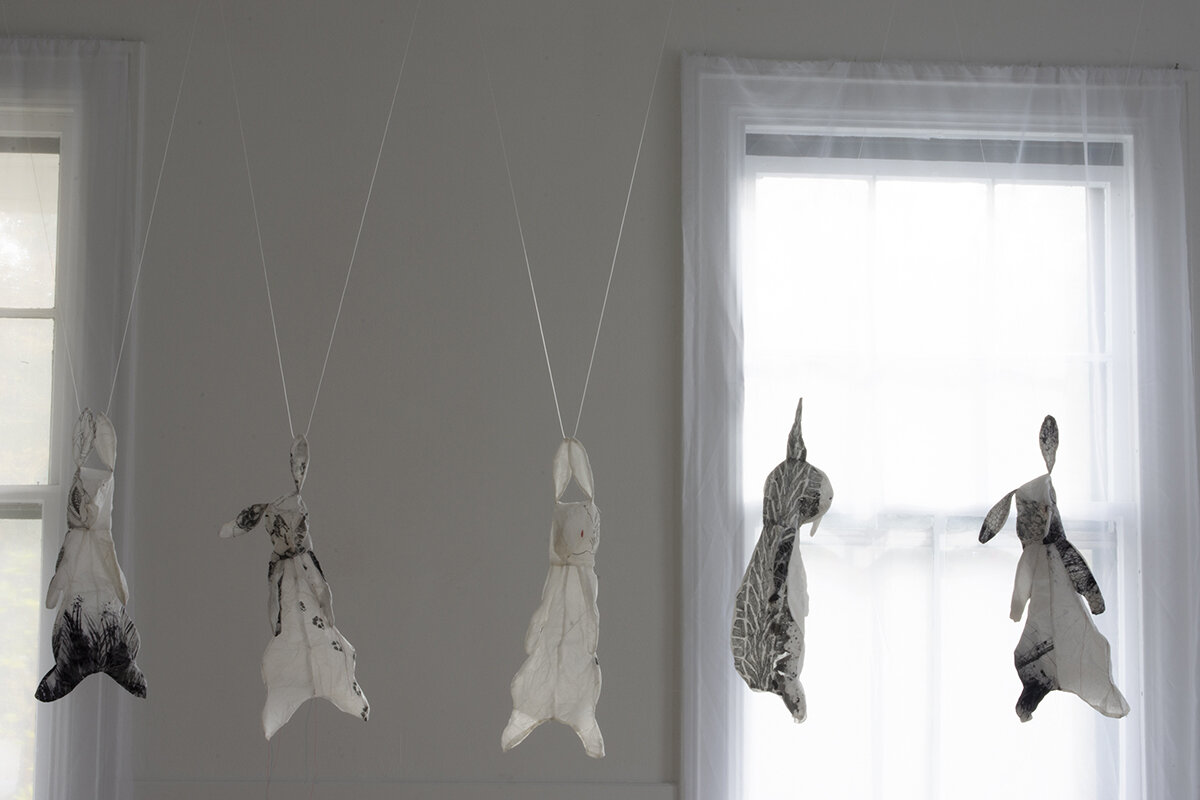
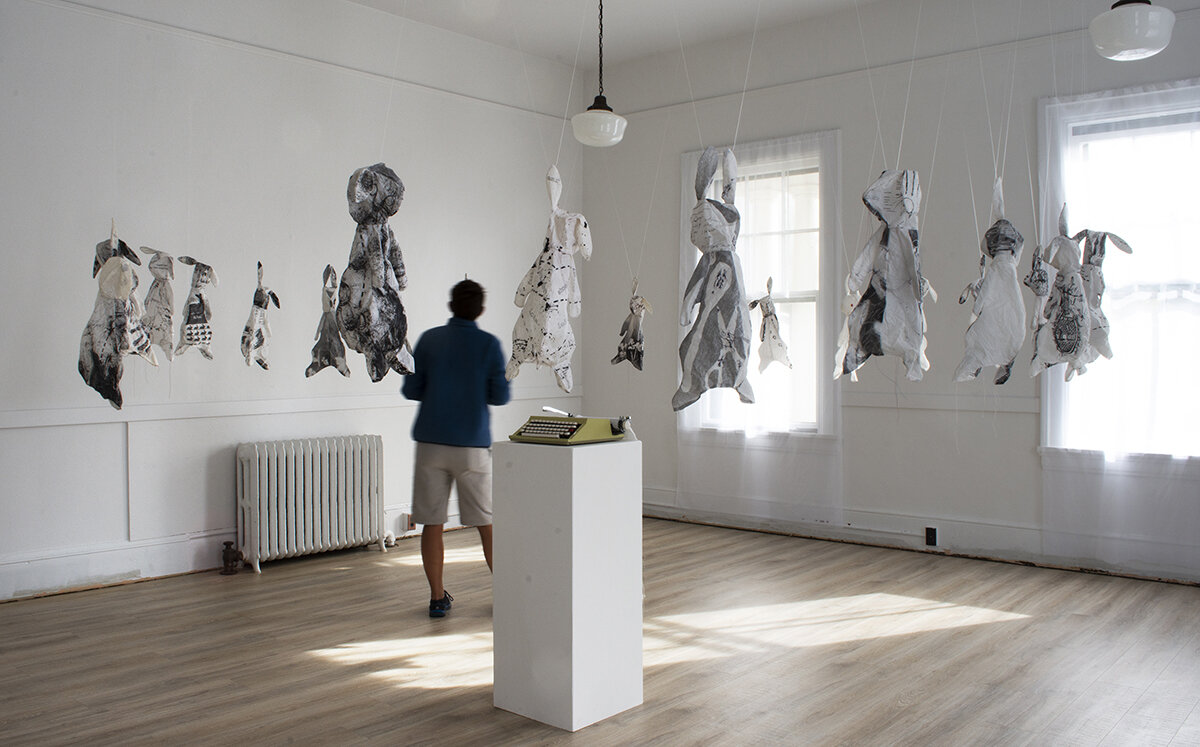
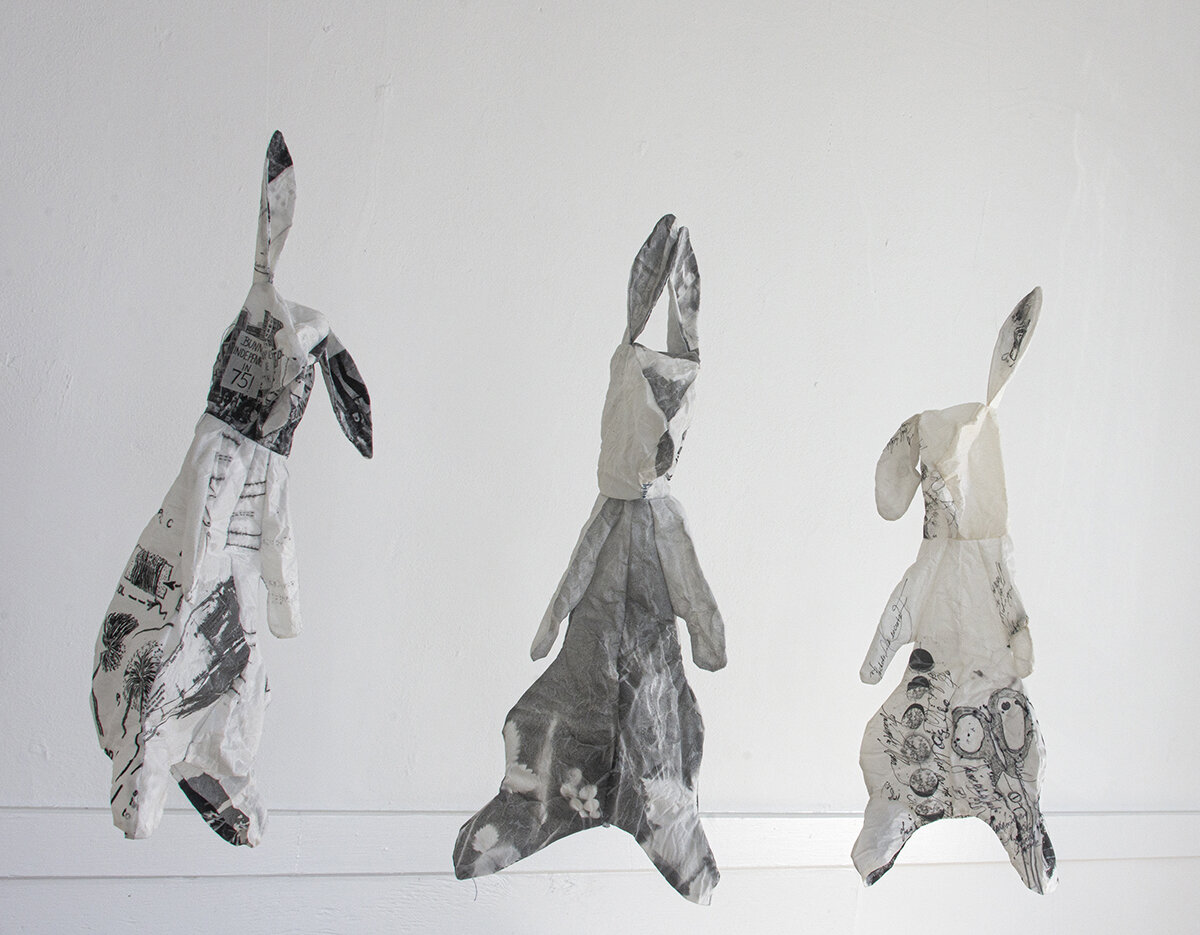
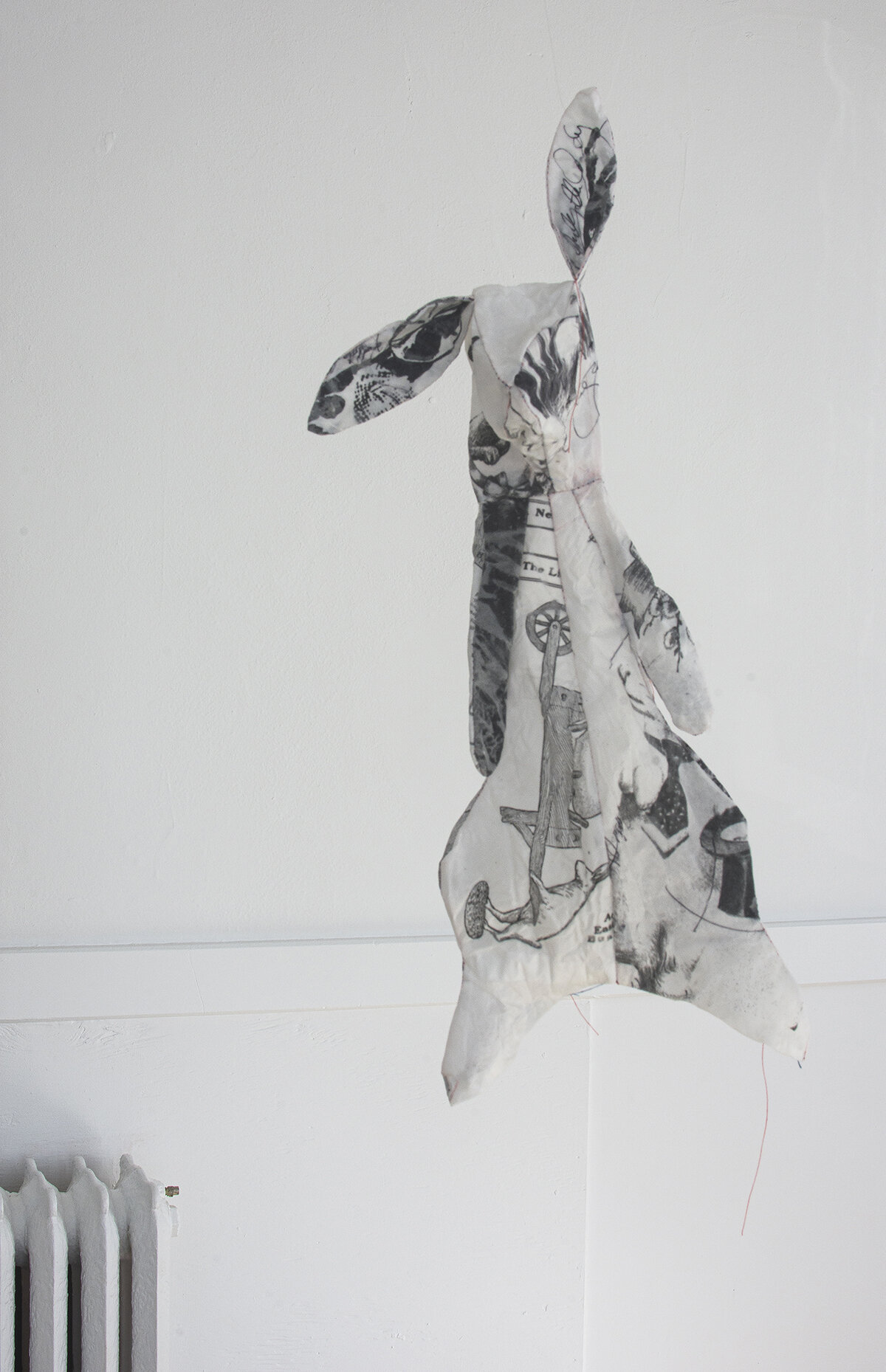
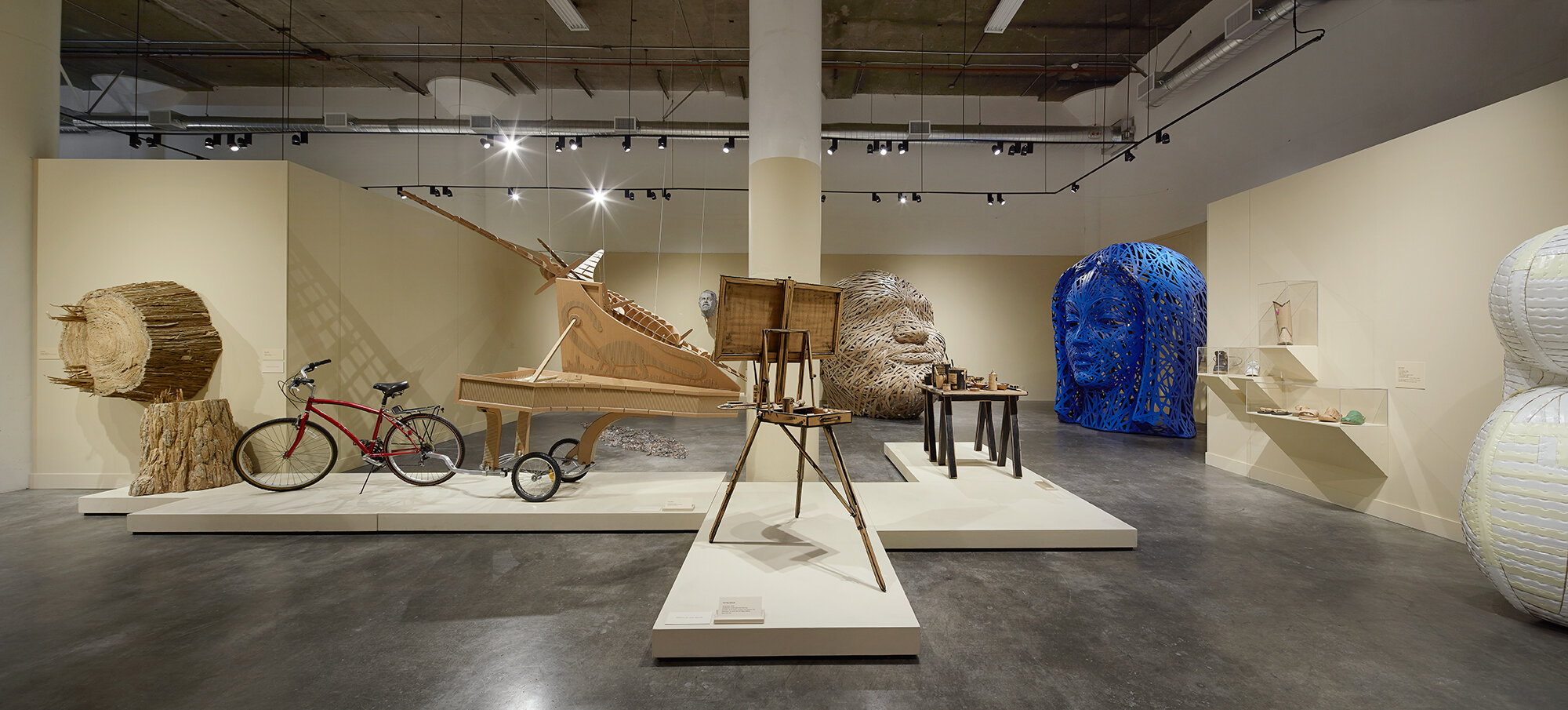
“Last Stand” series in Elevated Corrugated San Francisco Museum of Craft and Design
Photos courtesy of Kurt Lundquist.
Participating artists included: Tom Burckhardt, Scott Fife, Taro Hattori, Kiel Johnson, Mike Leavitt, Karen Rudd, Jason Schneider, David Sleeth, Michael Stutz, Ann Weber.





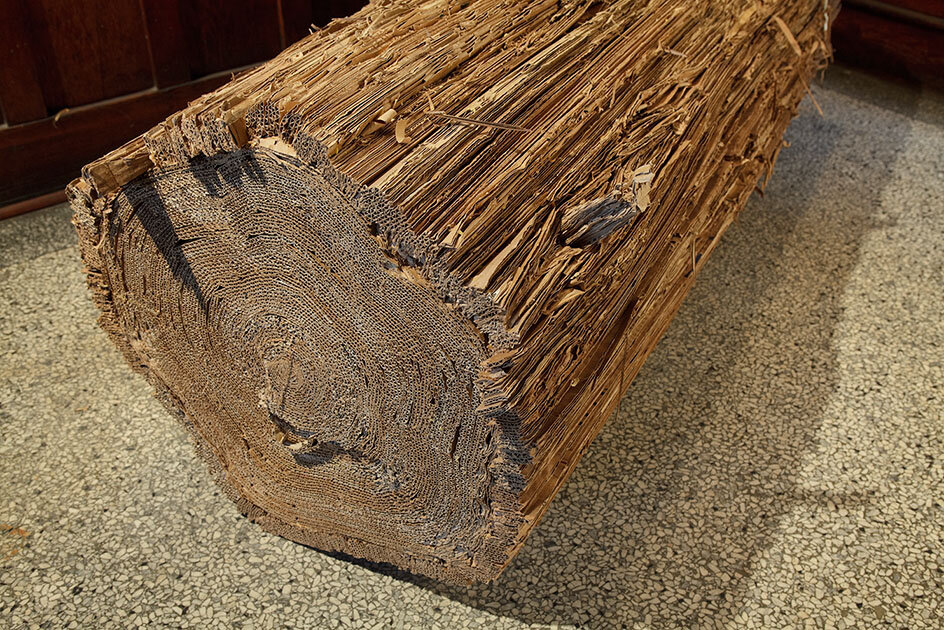
“Another standout is what appears to be an actual cedar stump in the middle of the gallery floor, but on closer inspection turns out to be a stump carefully and intricately constructed from shredded corrugated cardboard boxes by sculptor Karen Rudd.
It's a beautifully unnerving piece because of its hyper-realism and the shocking truth of its component parts, how the tightly wrapped layers of cardboard mimic the growth-rings of a tree, how the edges of cut cardboard imitate so perfectly the scraggly bark of an old red cedar. Here is the Northwest regurgitating its natural perfection: a old growth tree recycled into an imitation tree stump called art that, outdoors, could fool a weekend hiker into thinking it's the real, dead thing.
It also redefines the ordinary cardboard box as really just a different manifestation of a tree stump.”
— Knute Berger, Crosscut
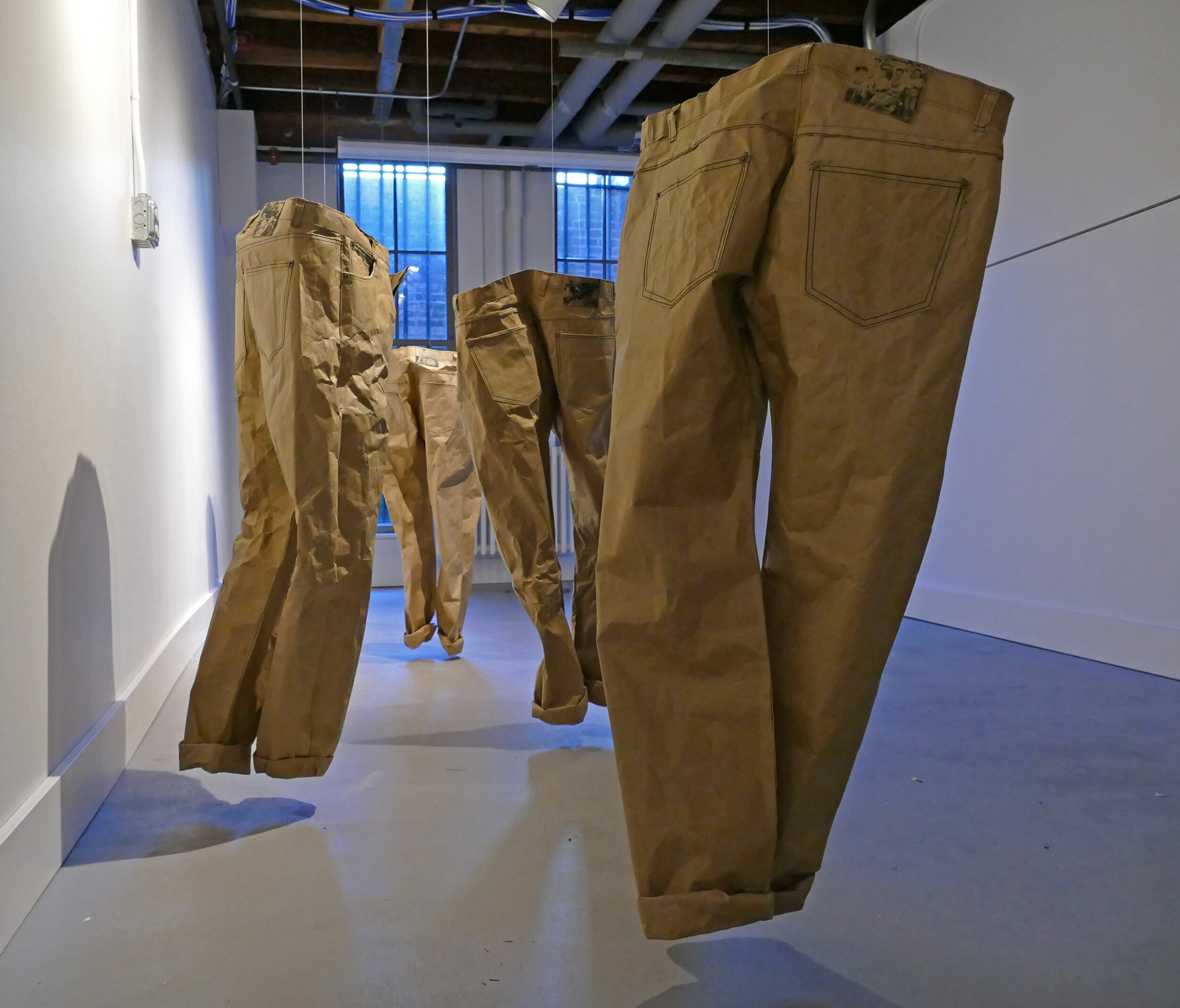
“Common Thread” at Jefferson Museum of Art & History
“Common Thread”, Port Townsend Paper show, Jefferson Museum of Art & History, Port Townsend WA, 2021
kraft paper from Port Townsend Paper Company, rivets, buttons. Photos below: Ann Welch
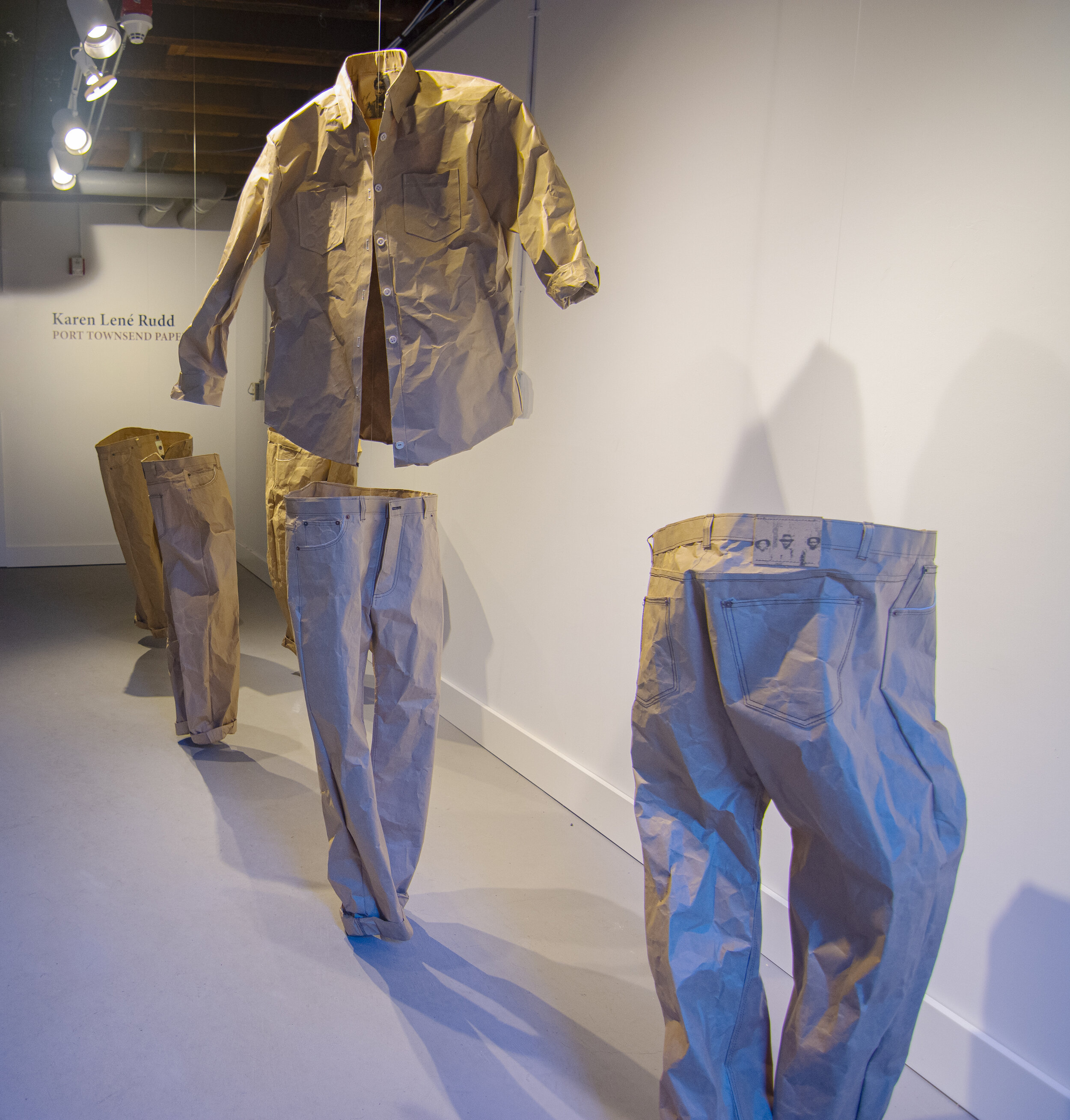
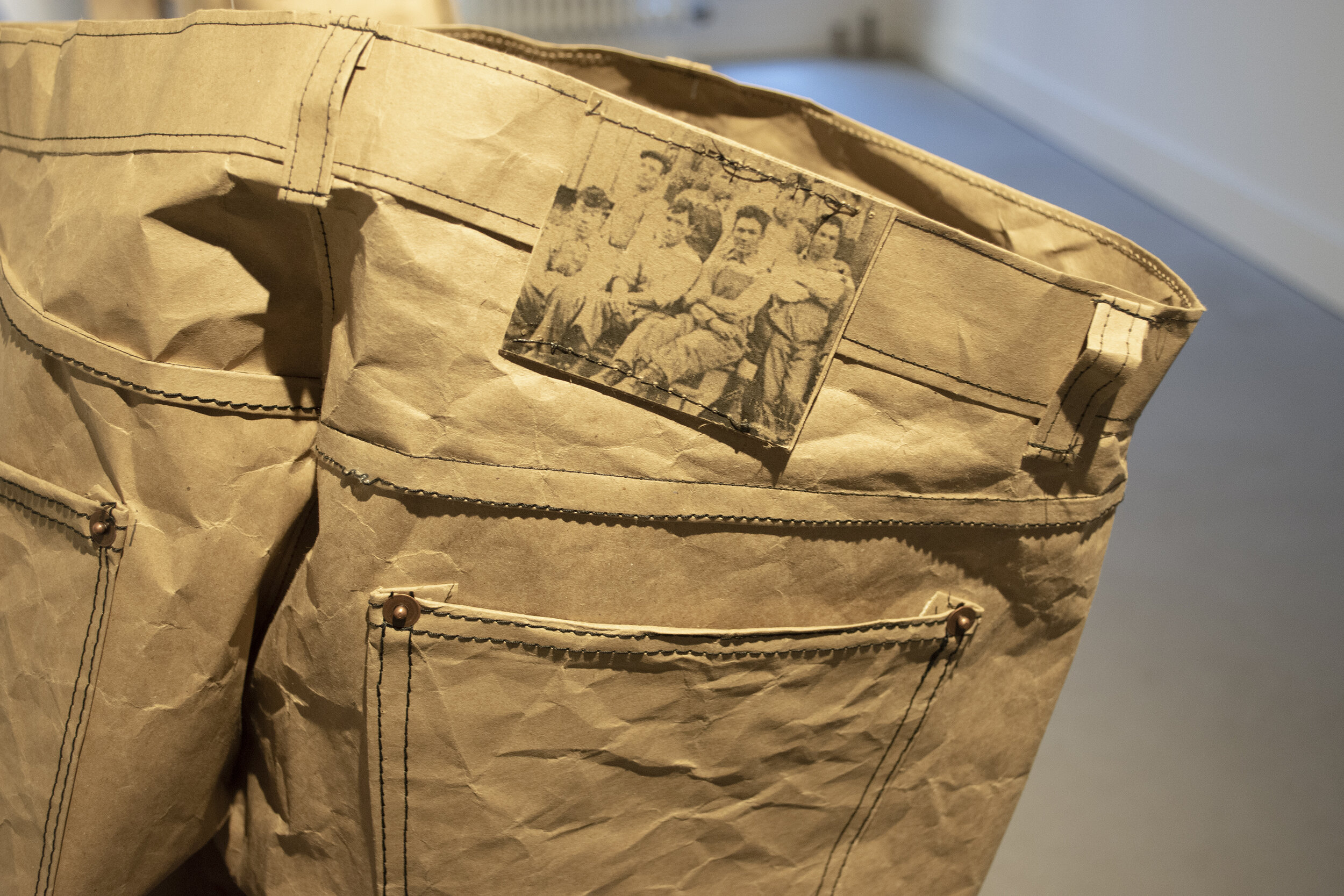
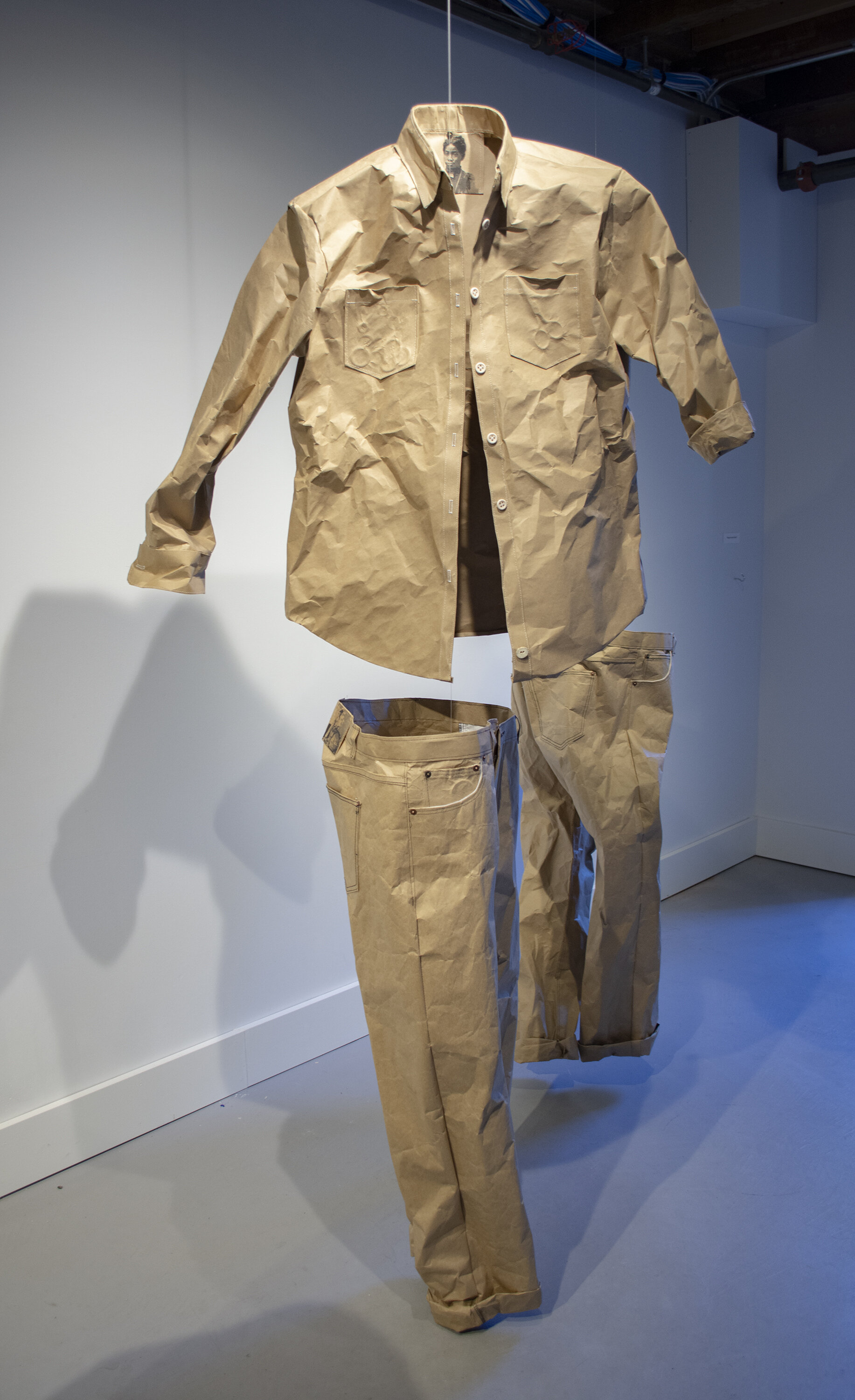
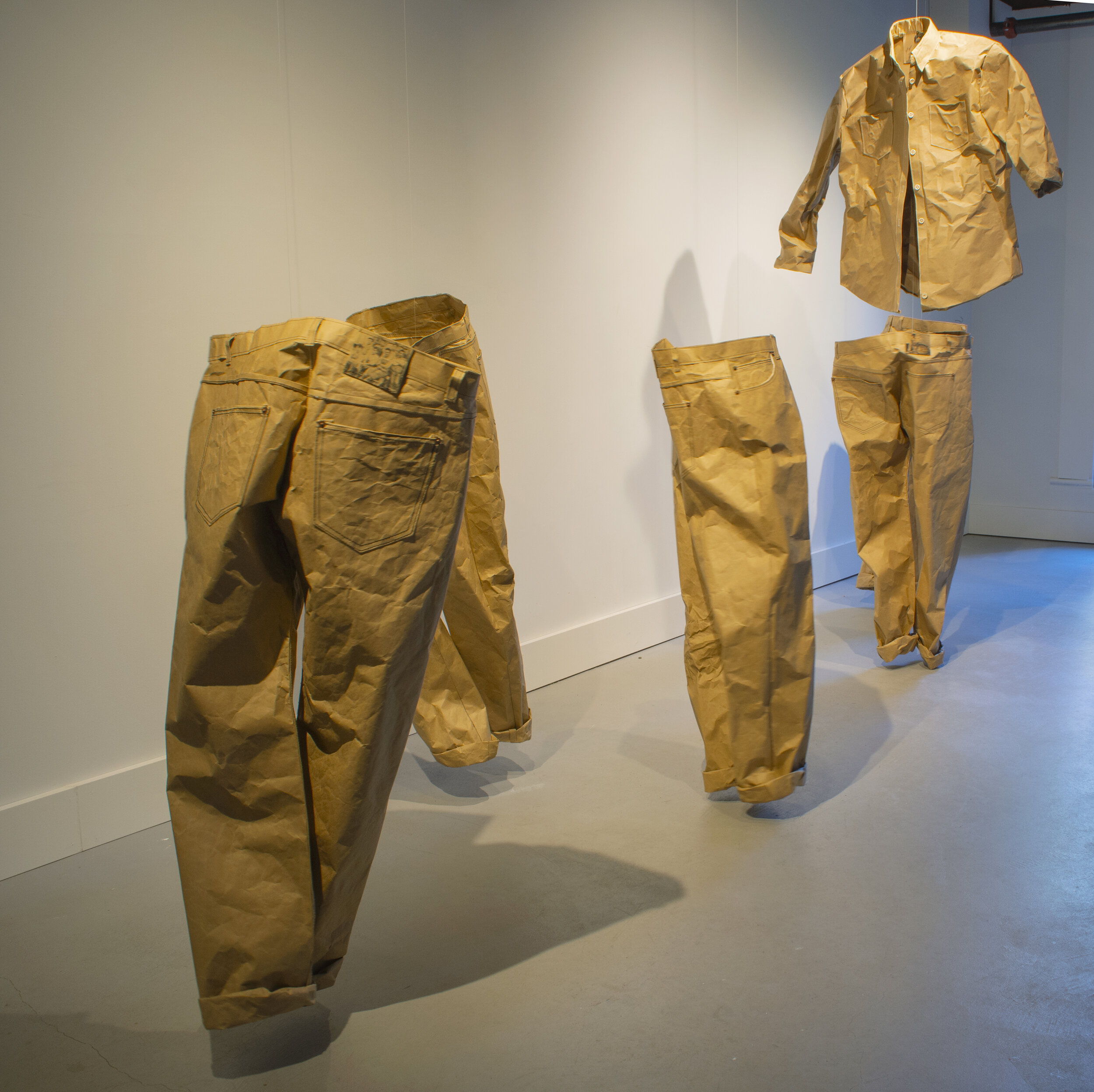
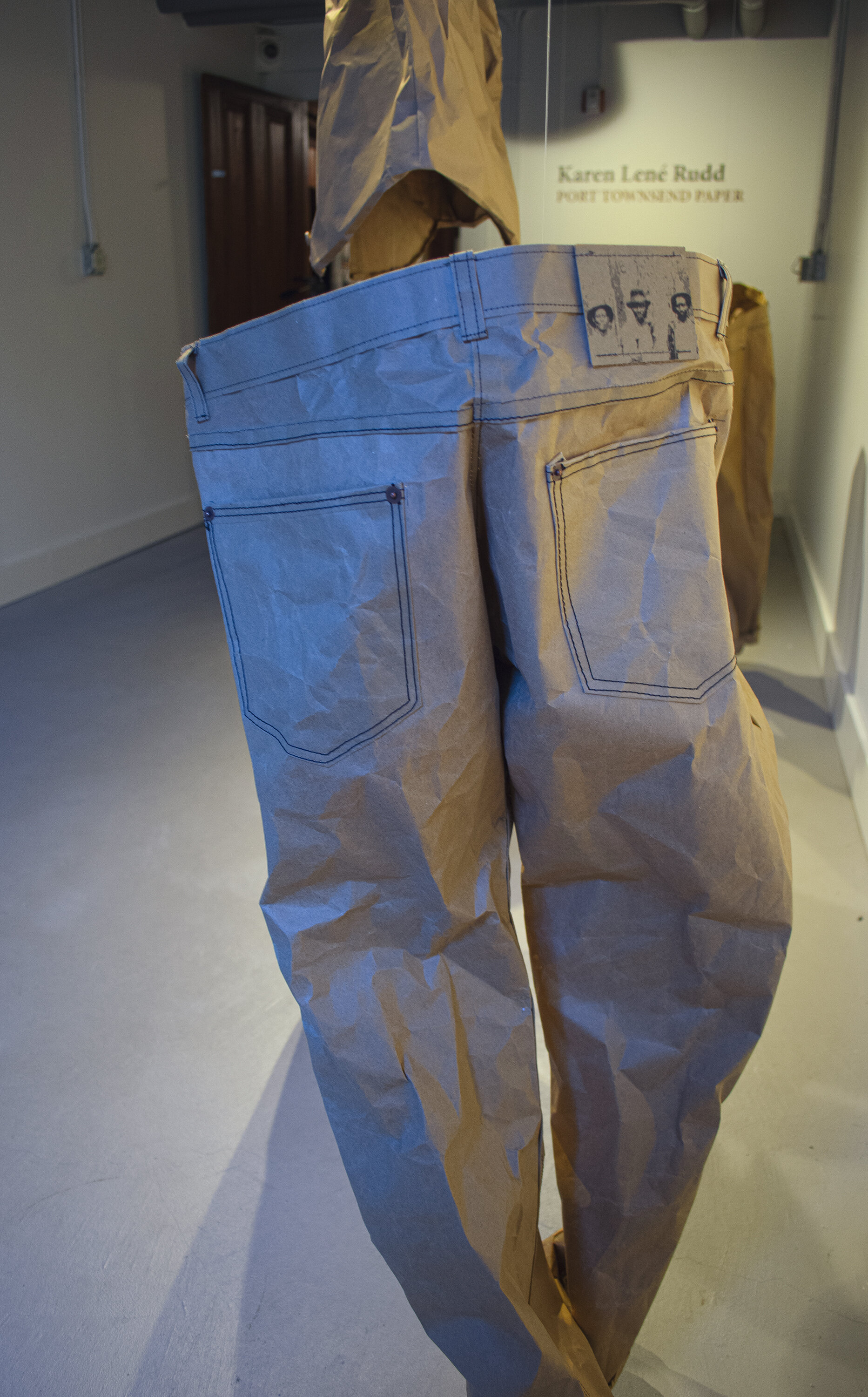

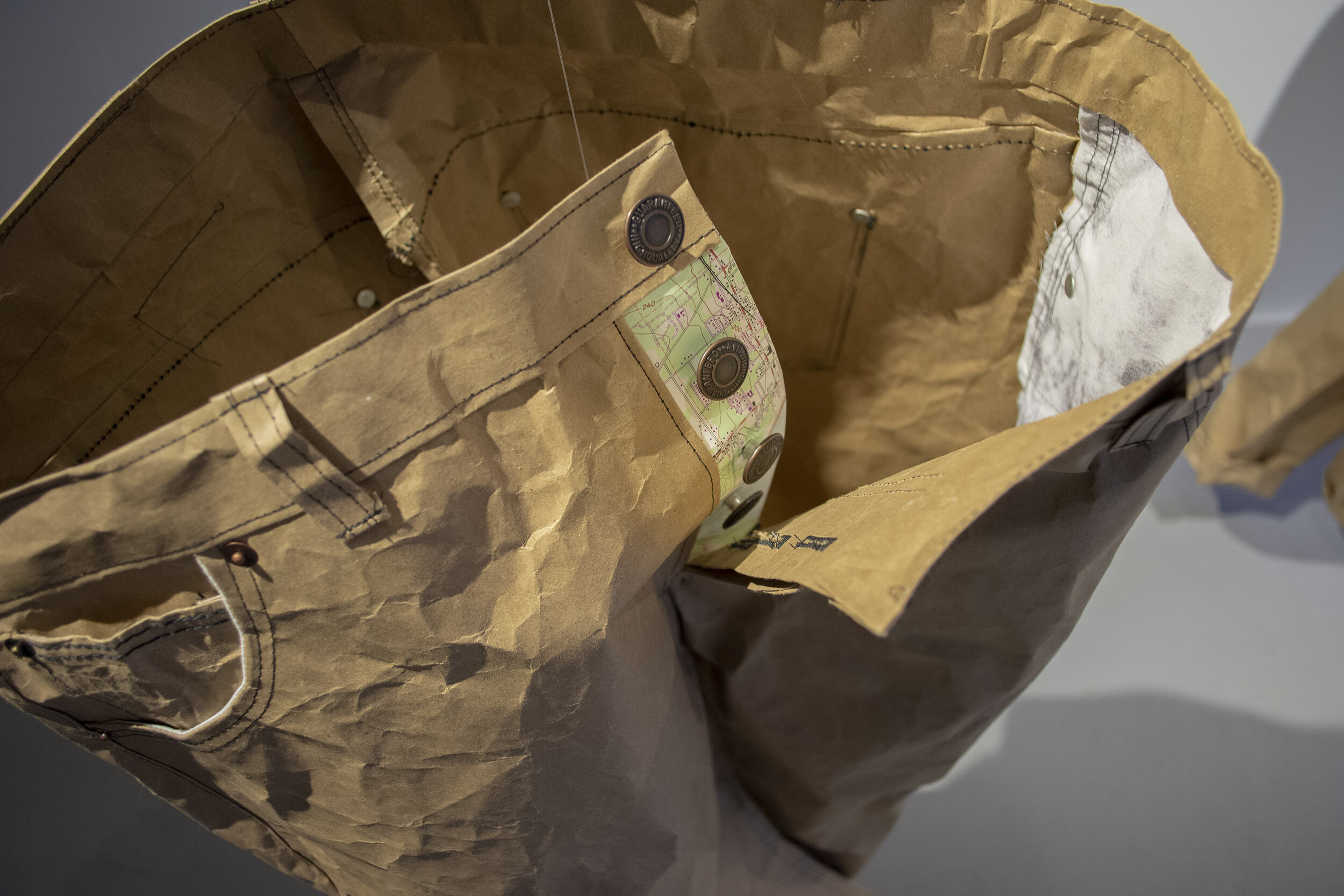
“Bird’s Eye View” OK Hotel, Seattle, Washington, 2010 Photos: William Wright
plaster
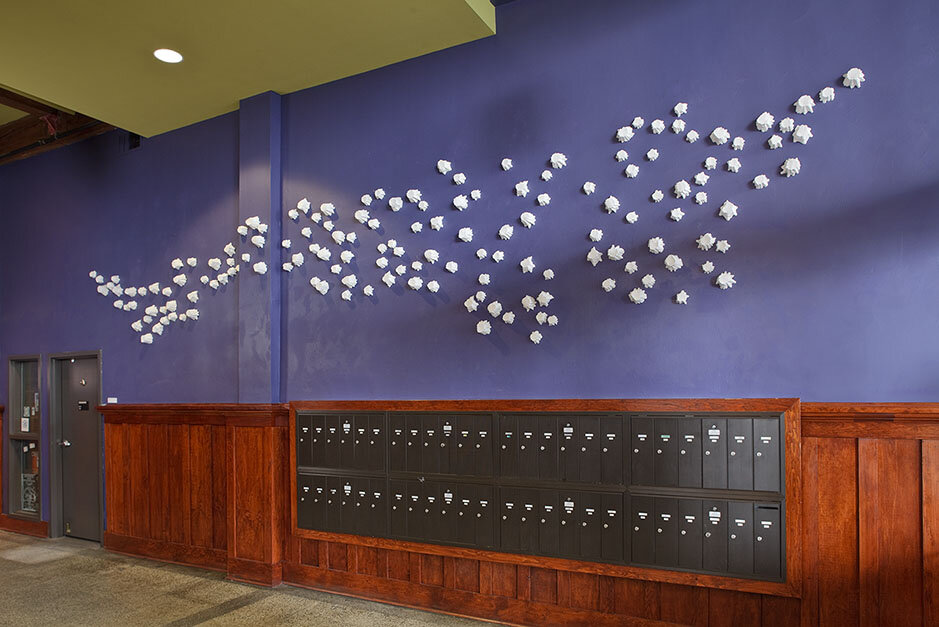

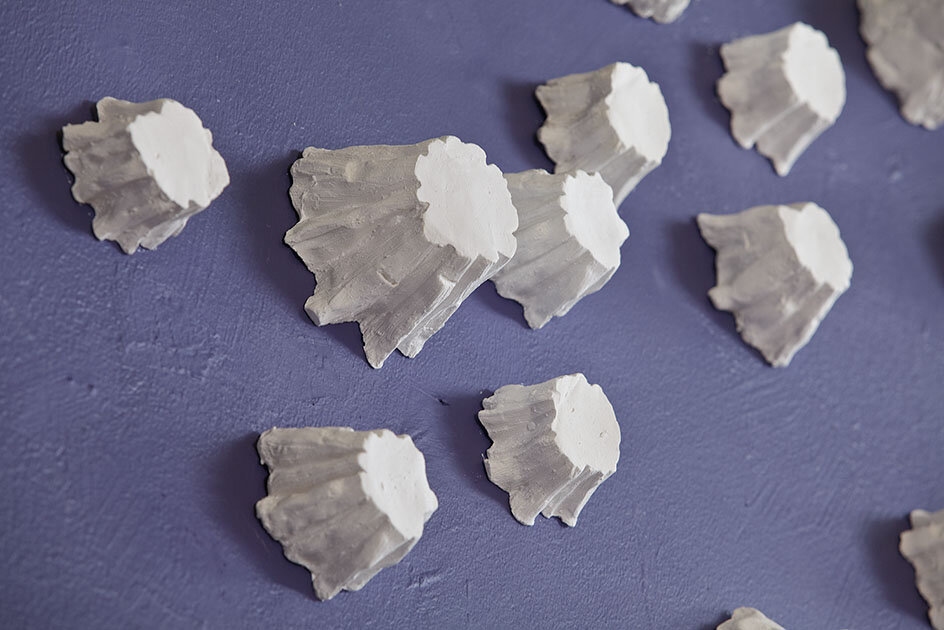
“Last Stand” OK Hotel, Seattle, Washington, 2010, Photos: William Wright
reclaimed corrugated cardboard
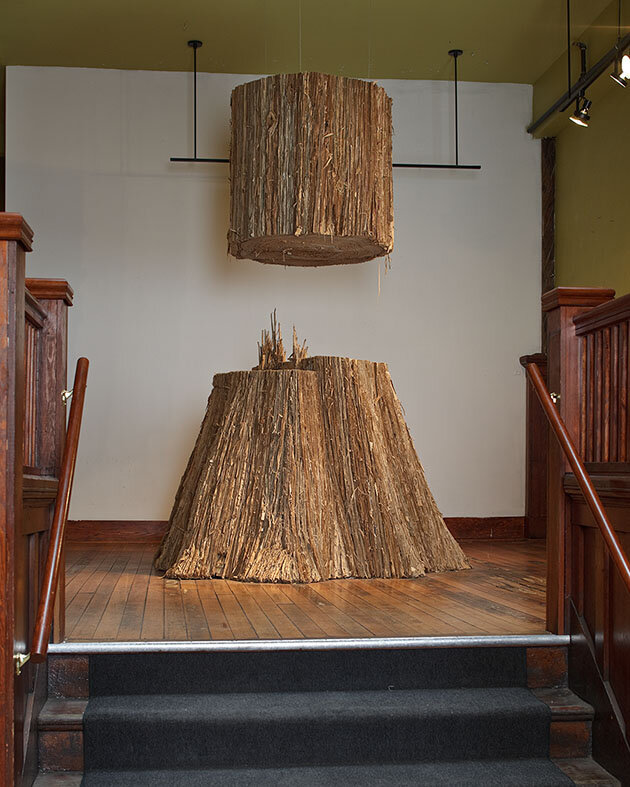
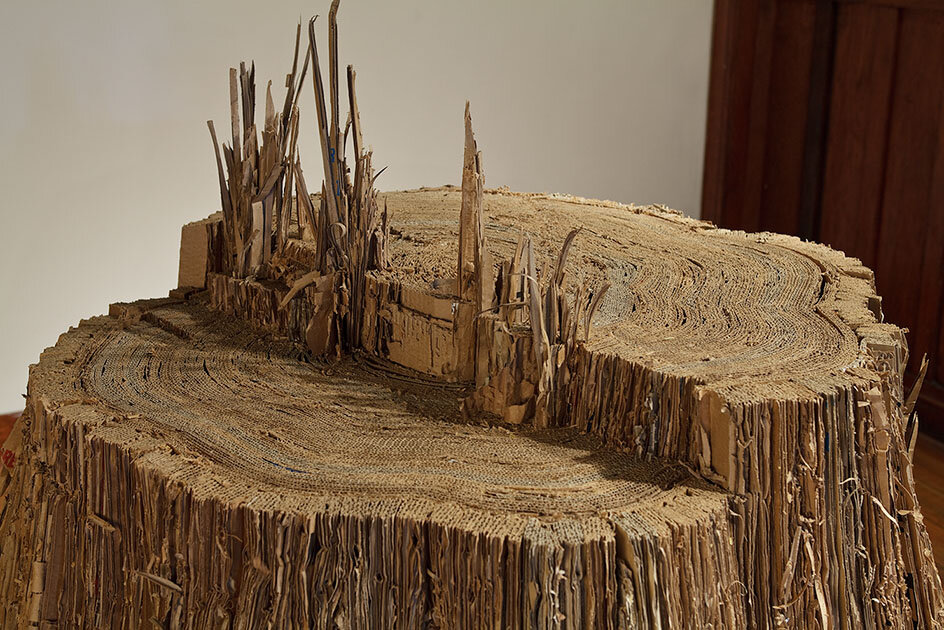
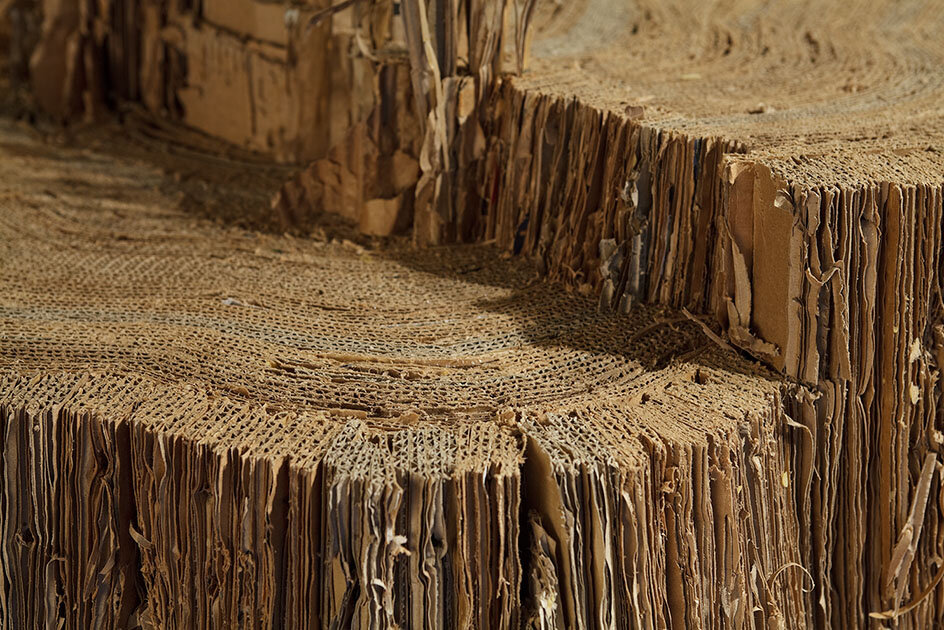

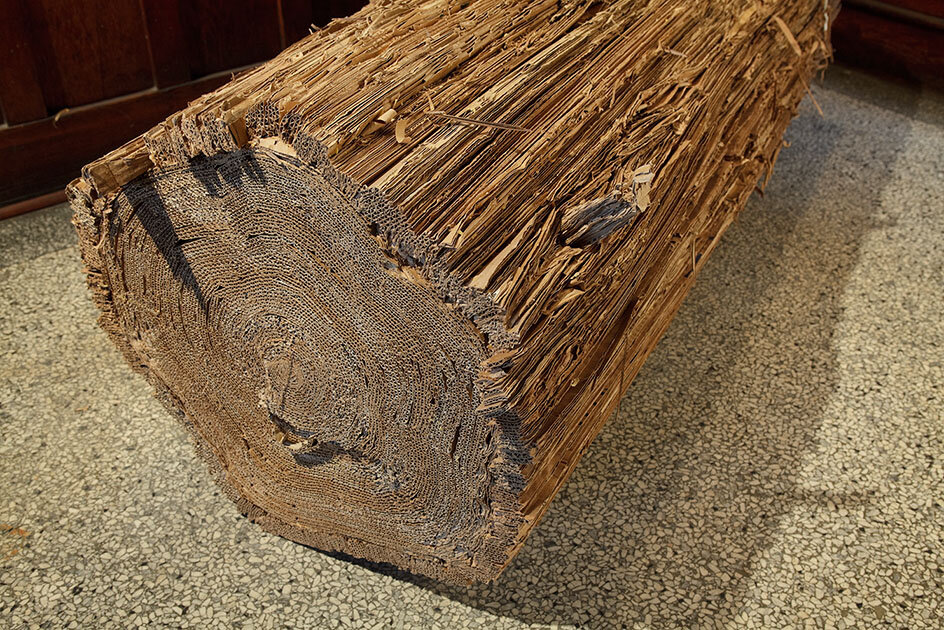
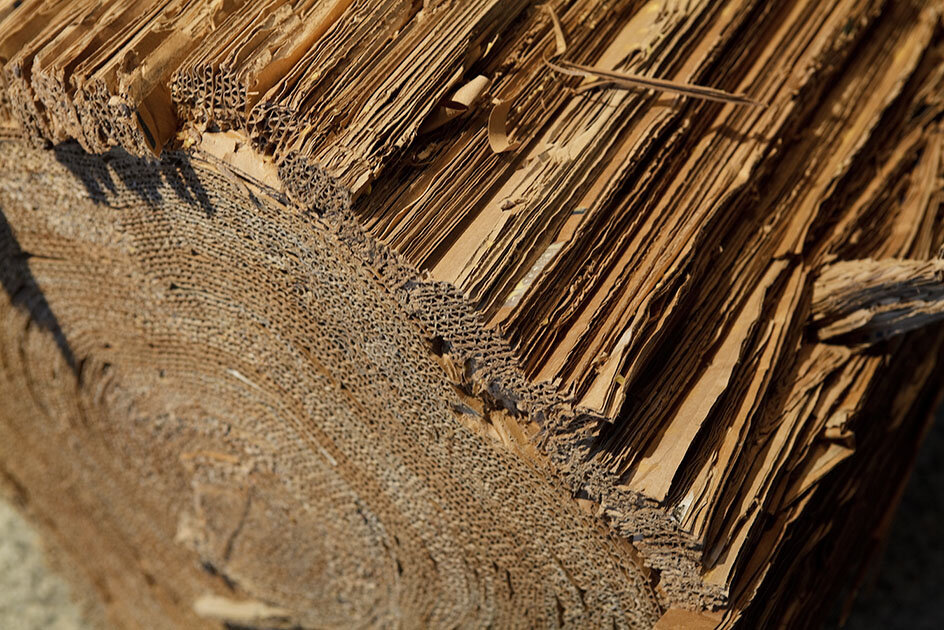
“Last Stand," by Karen Rudd is not only the smartest piece of art in the show, but also, socio-politically speaking, one of the most currently relevant works in the show. At a distance this piece looks like nothing more than a tree trunk, but upon closer inspection it is made of, (I pause here to consider not telling you, thereby saving the surprise, but…), scrap pieces of recycled cardboard and glue. Nothing more.”
— Marie Weichman, Olympic College







